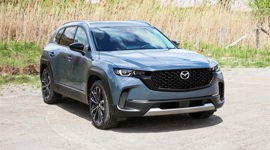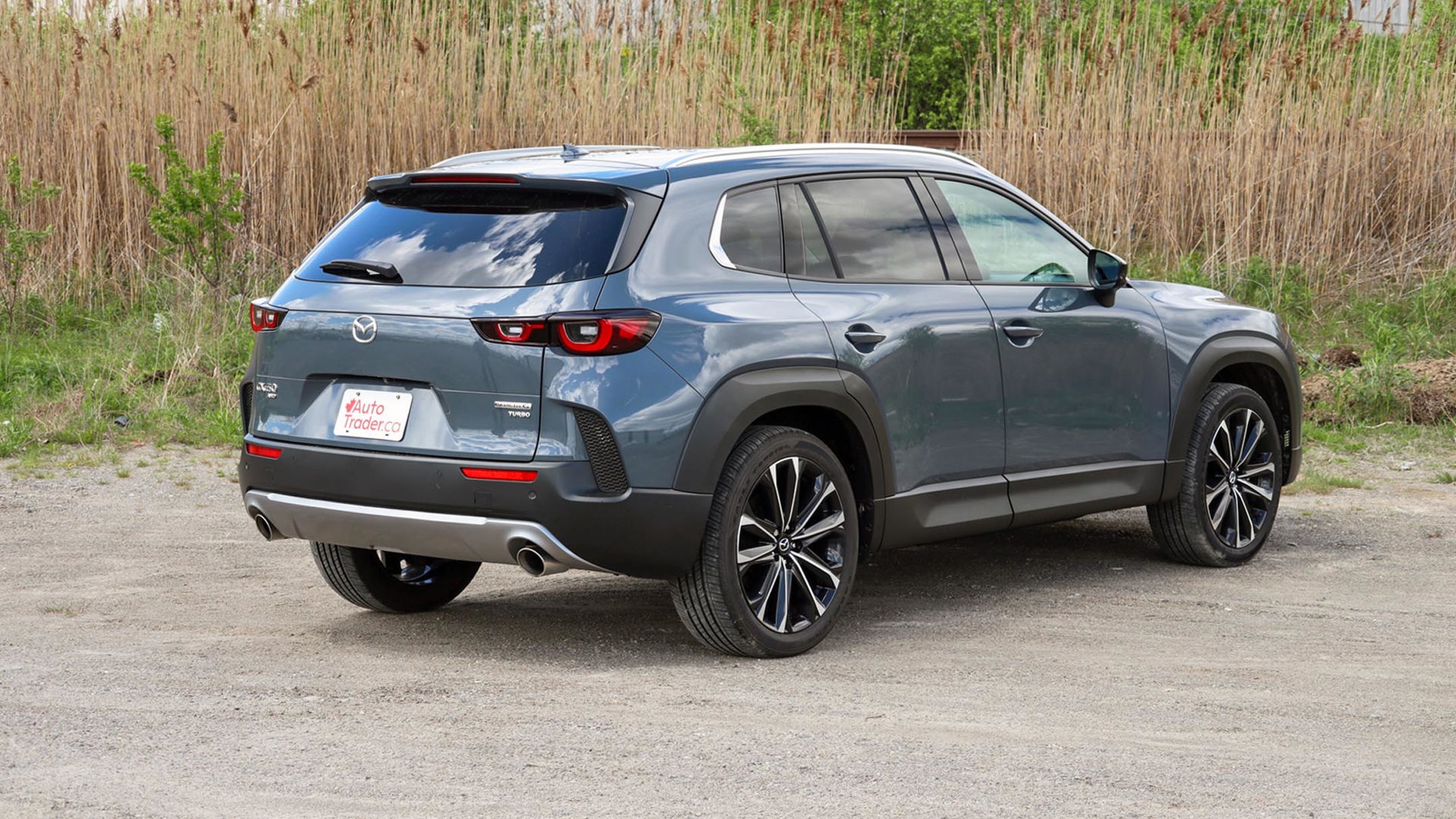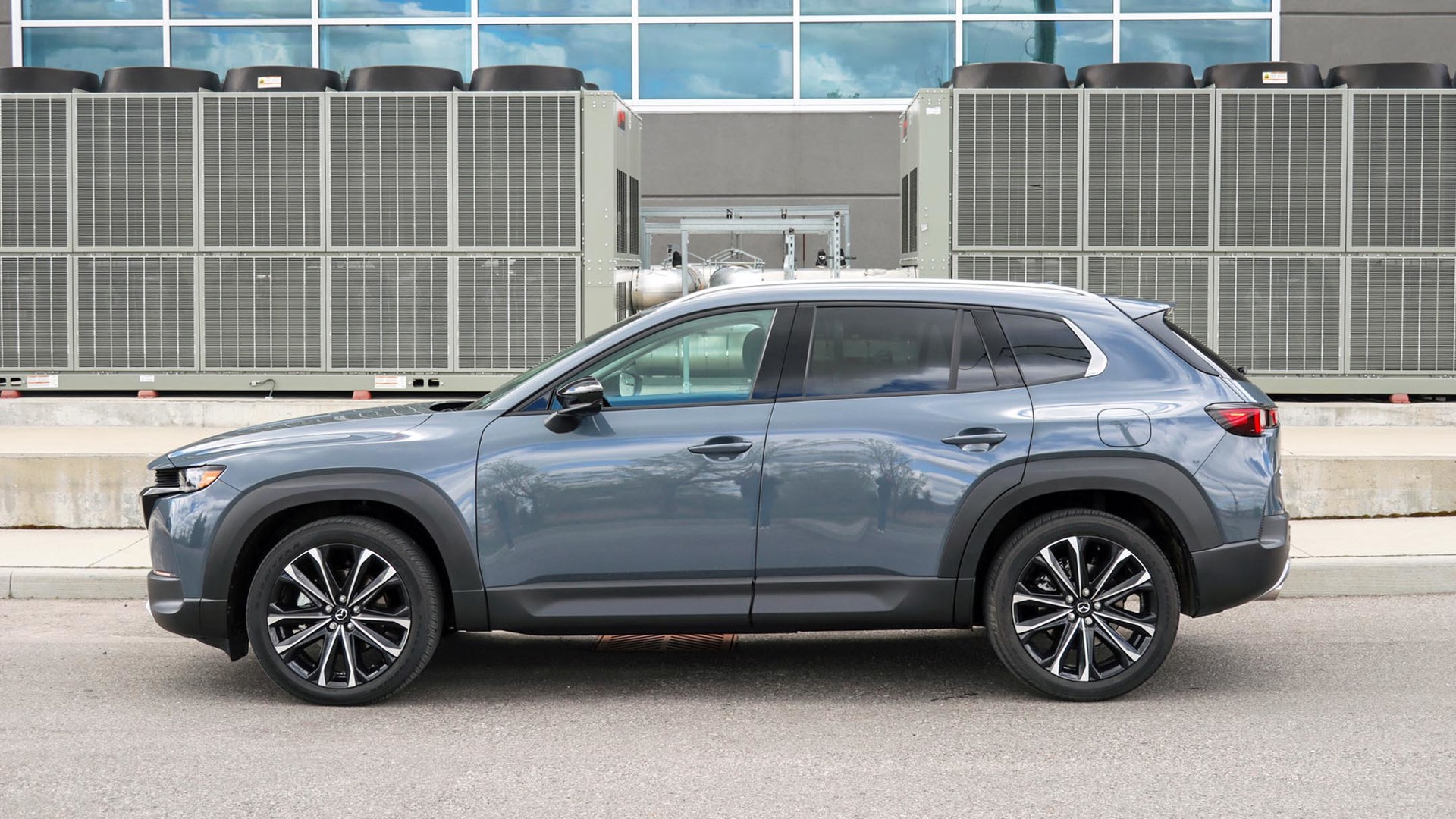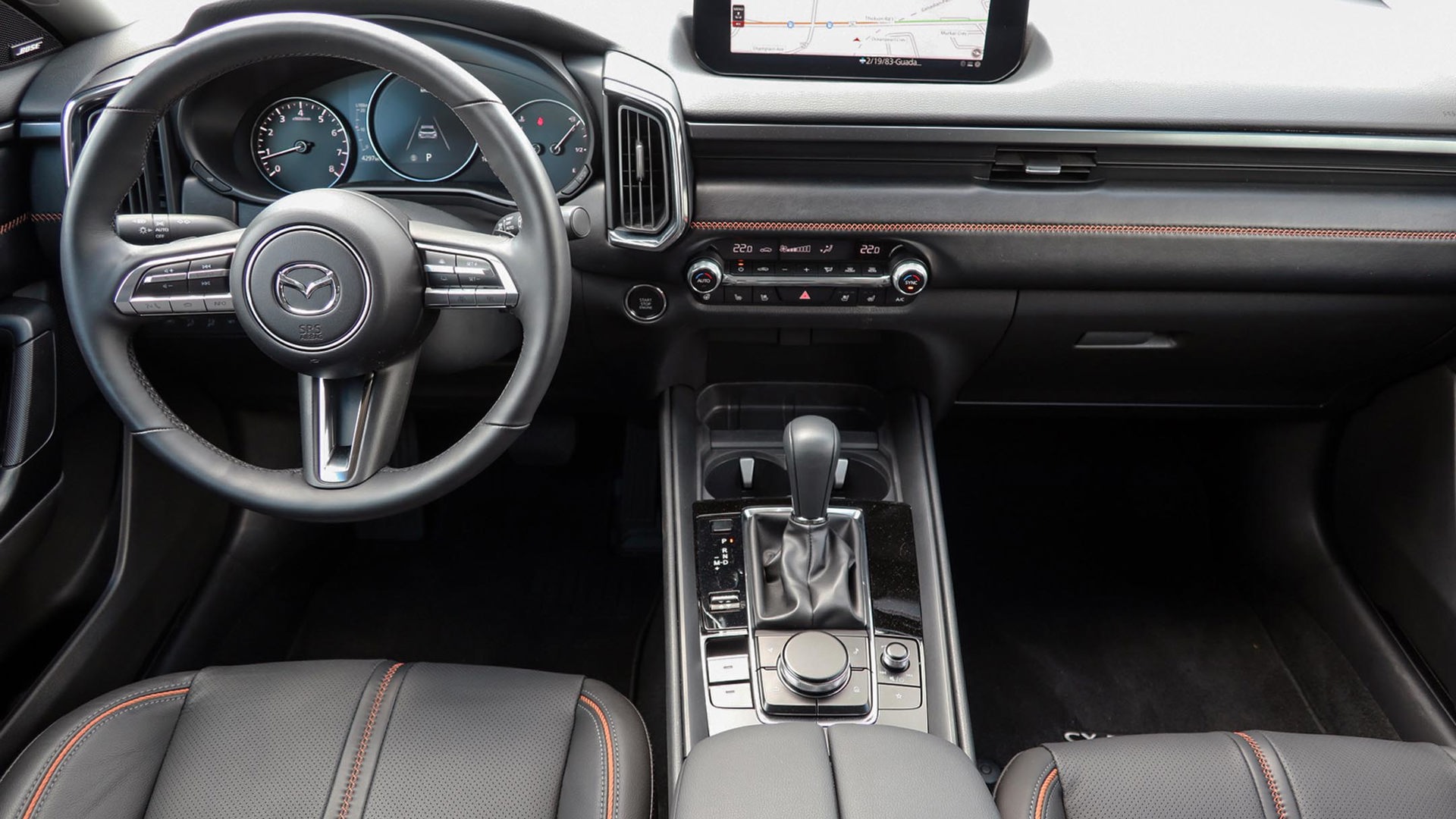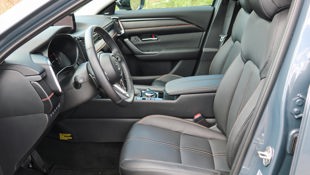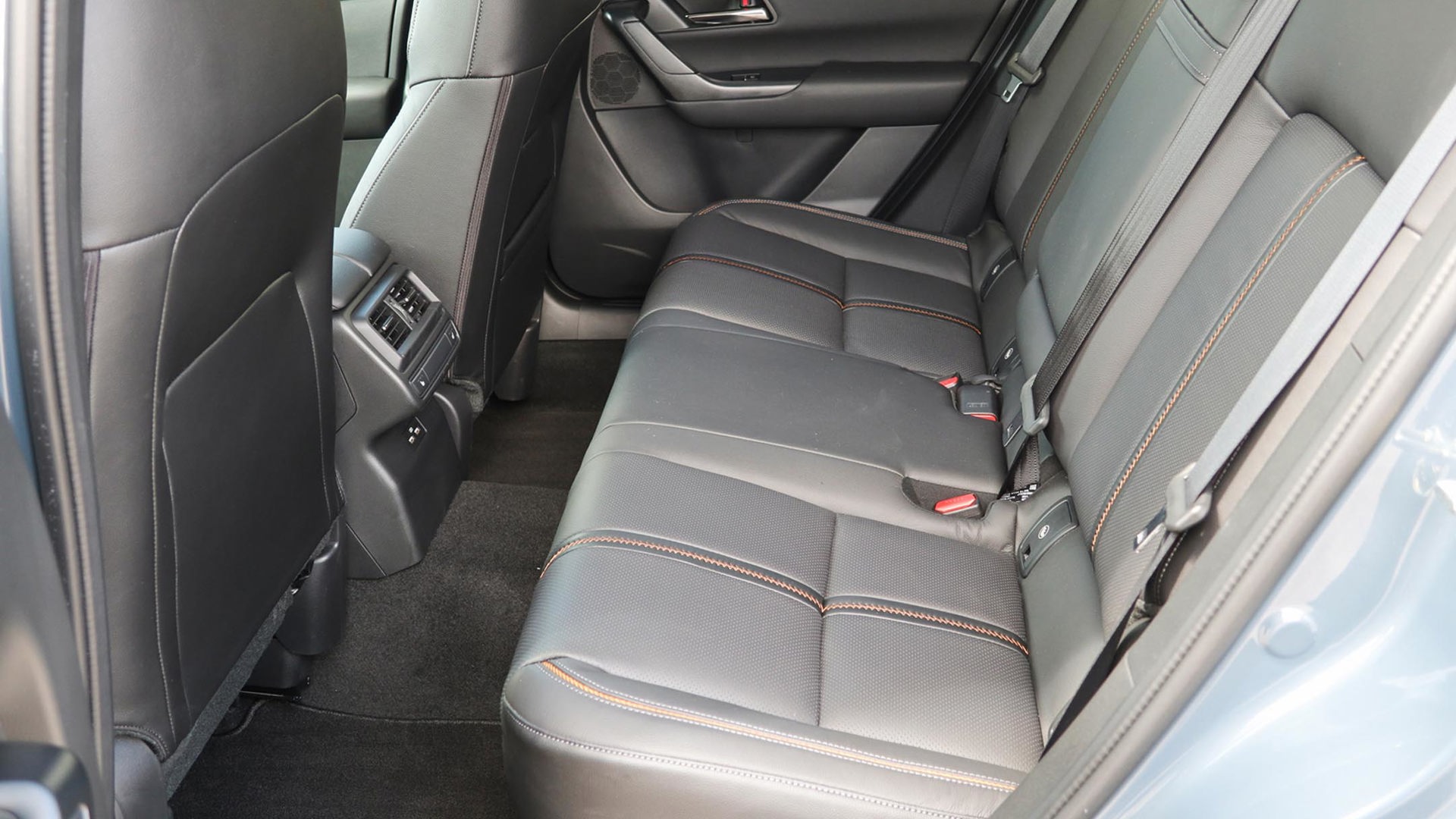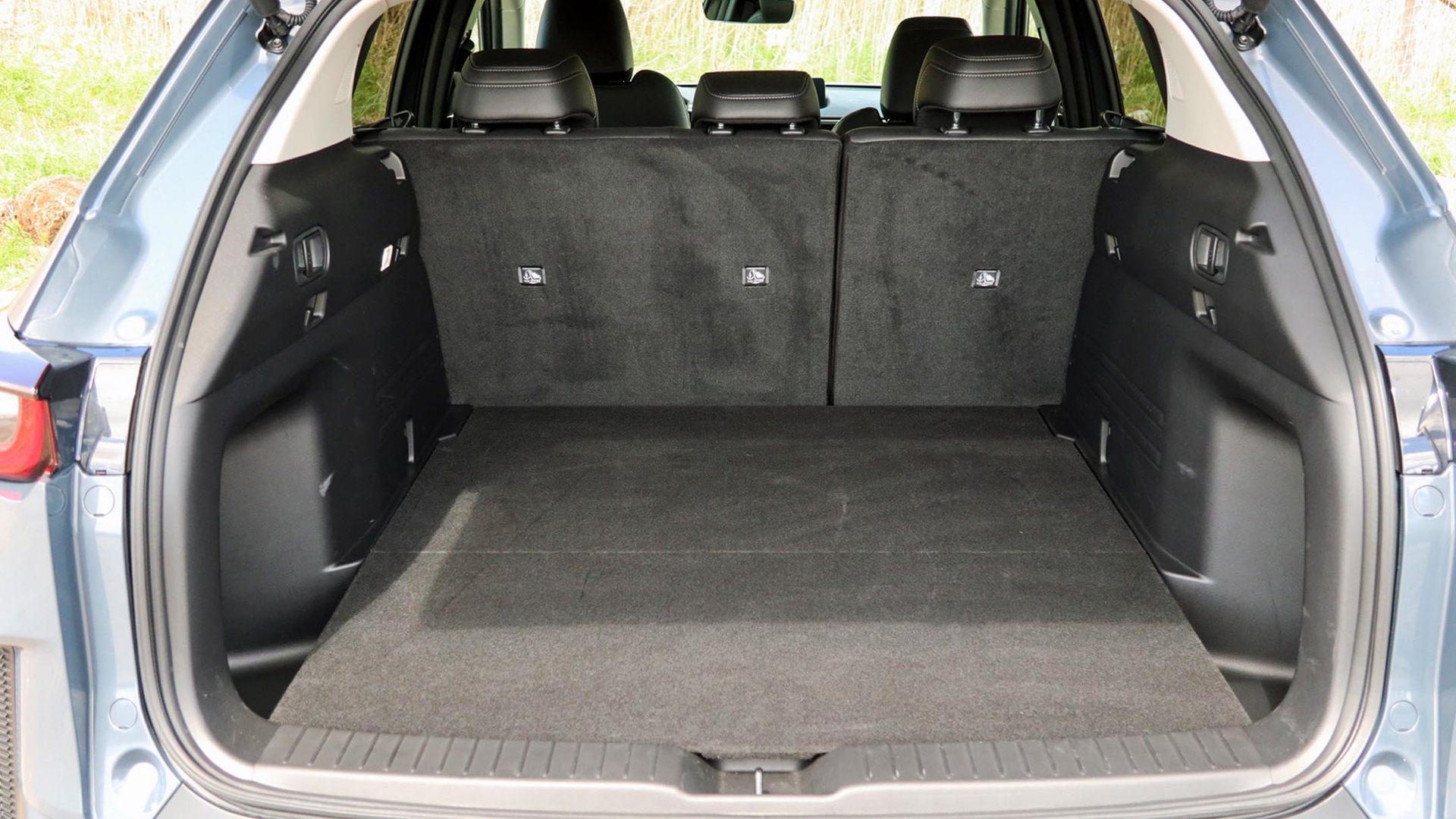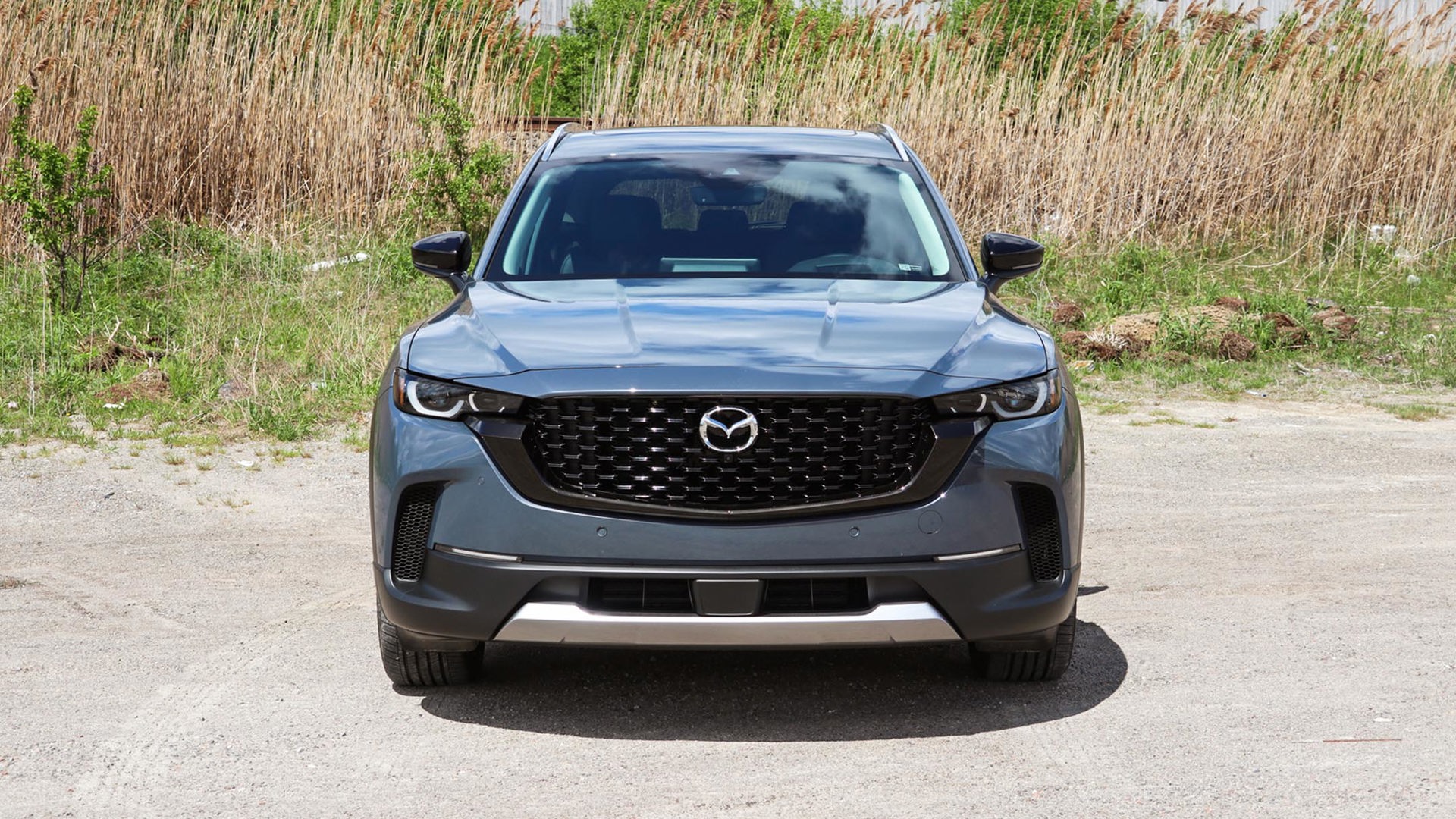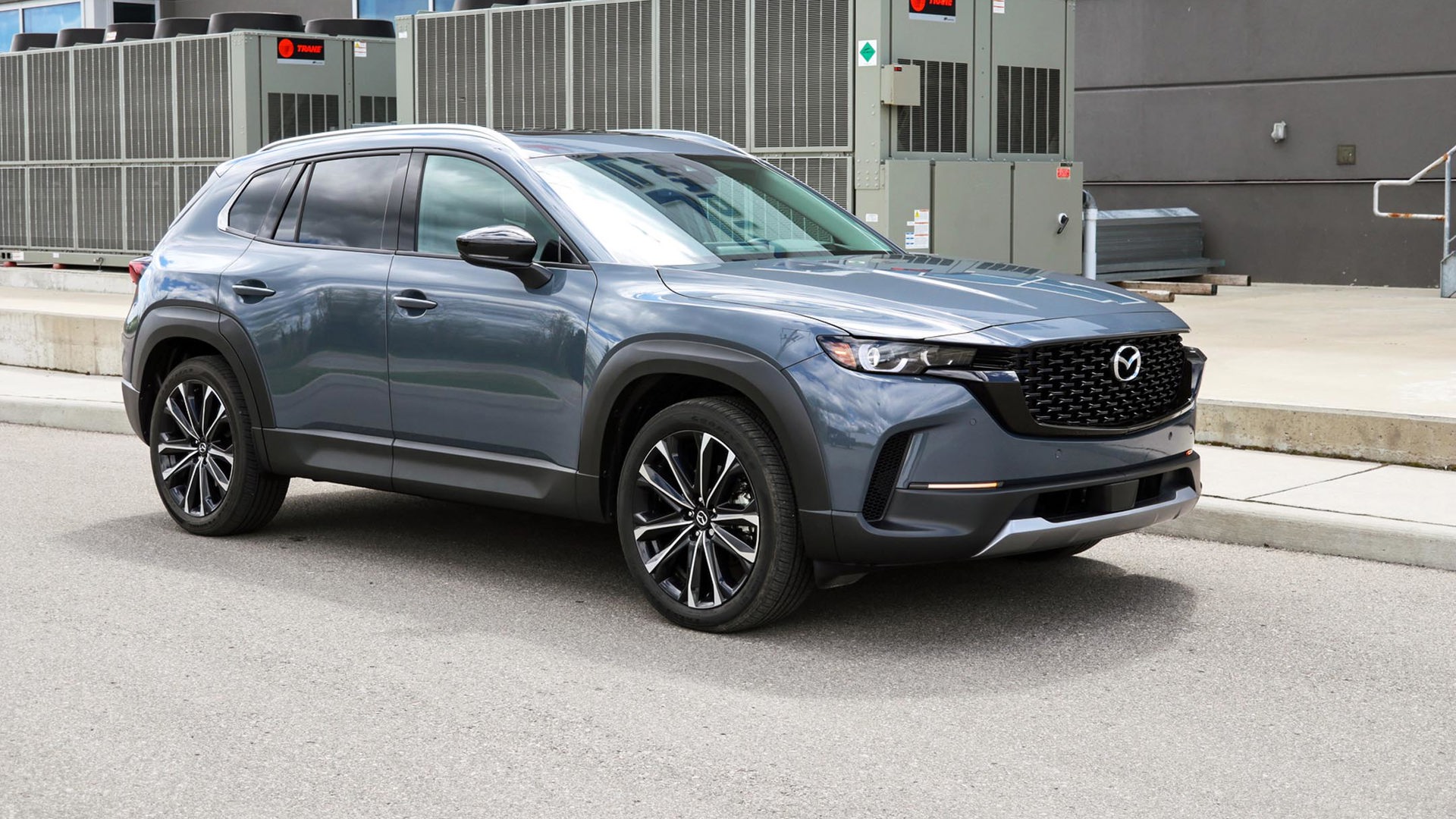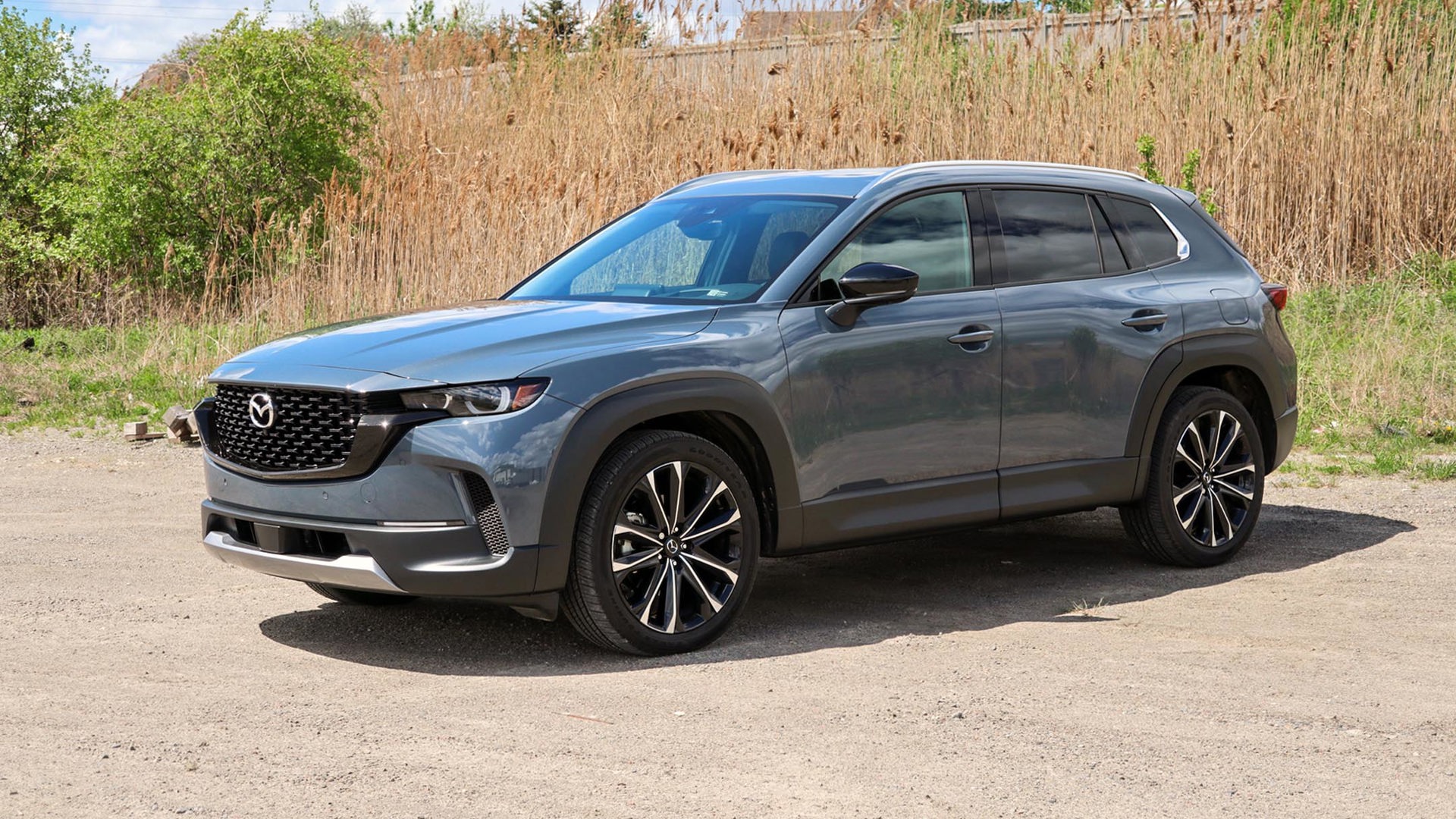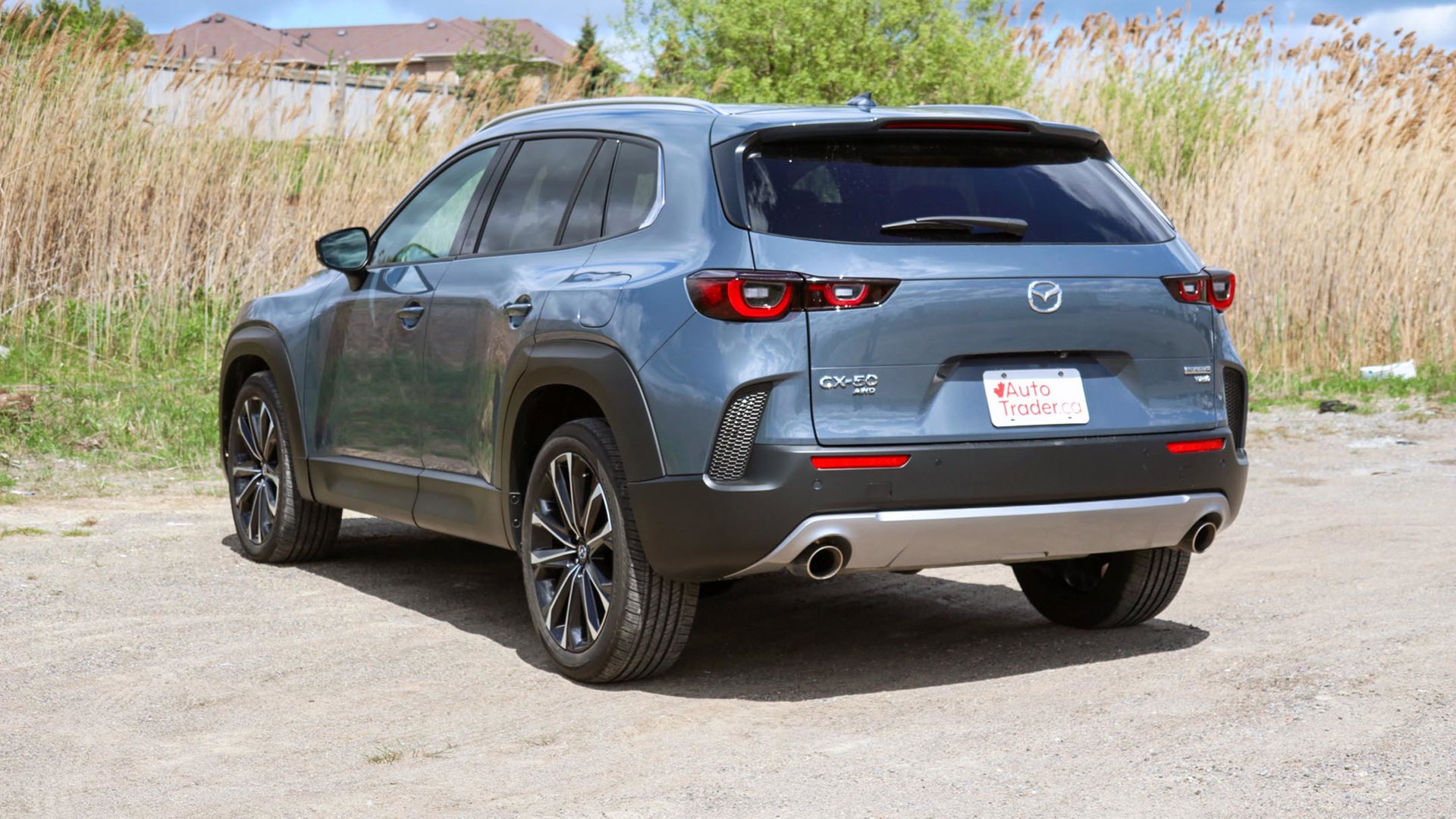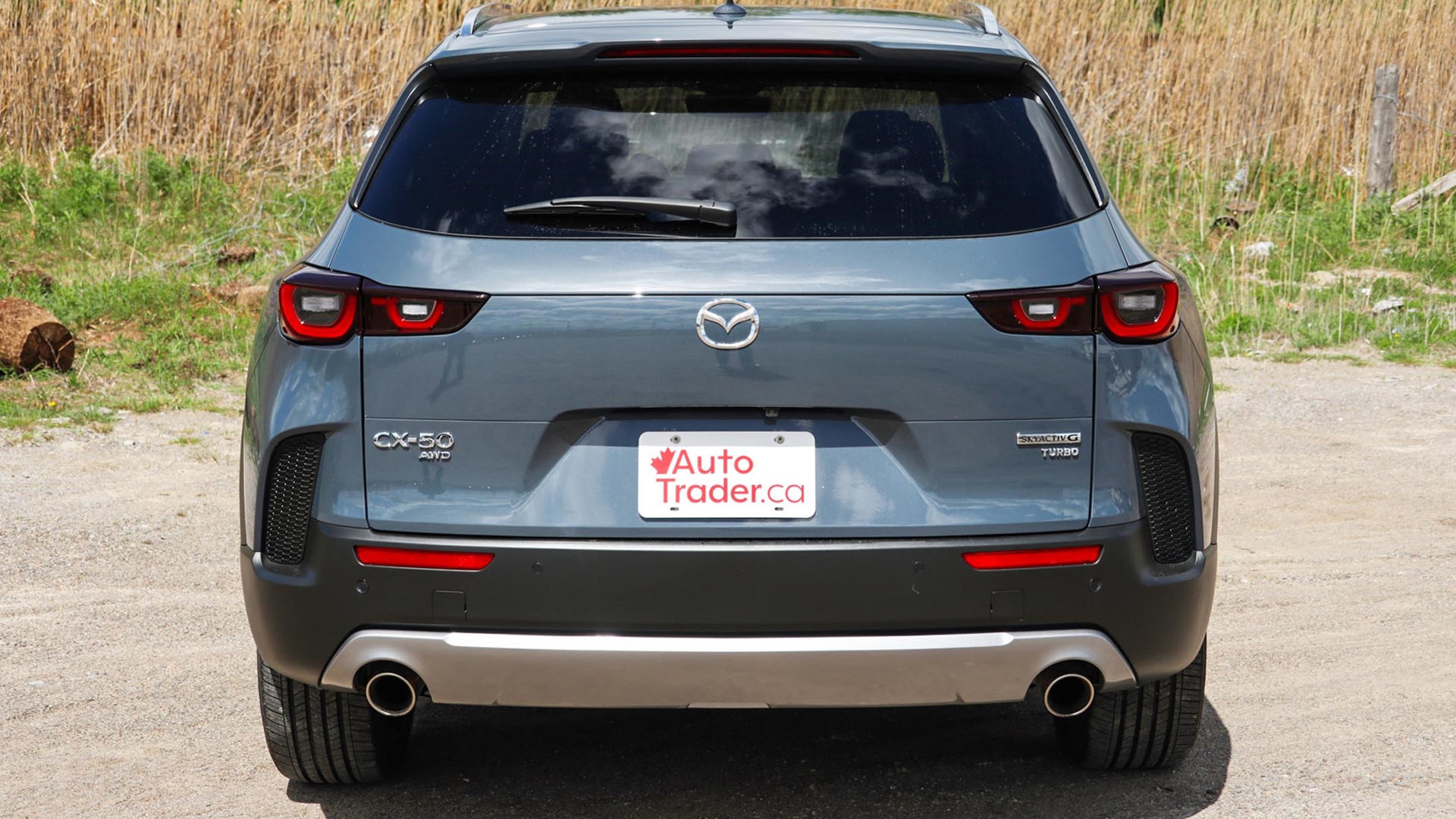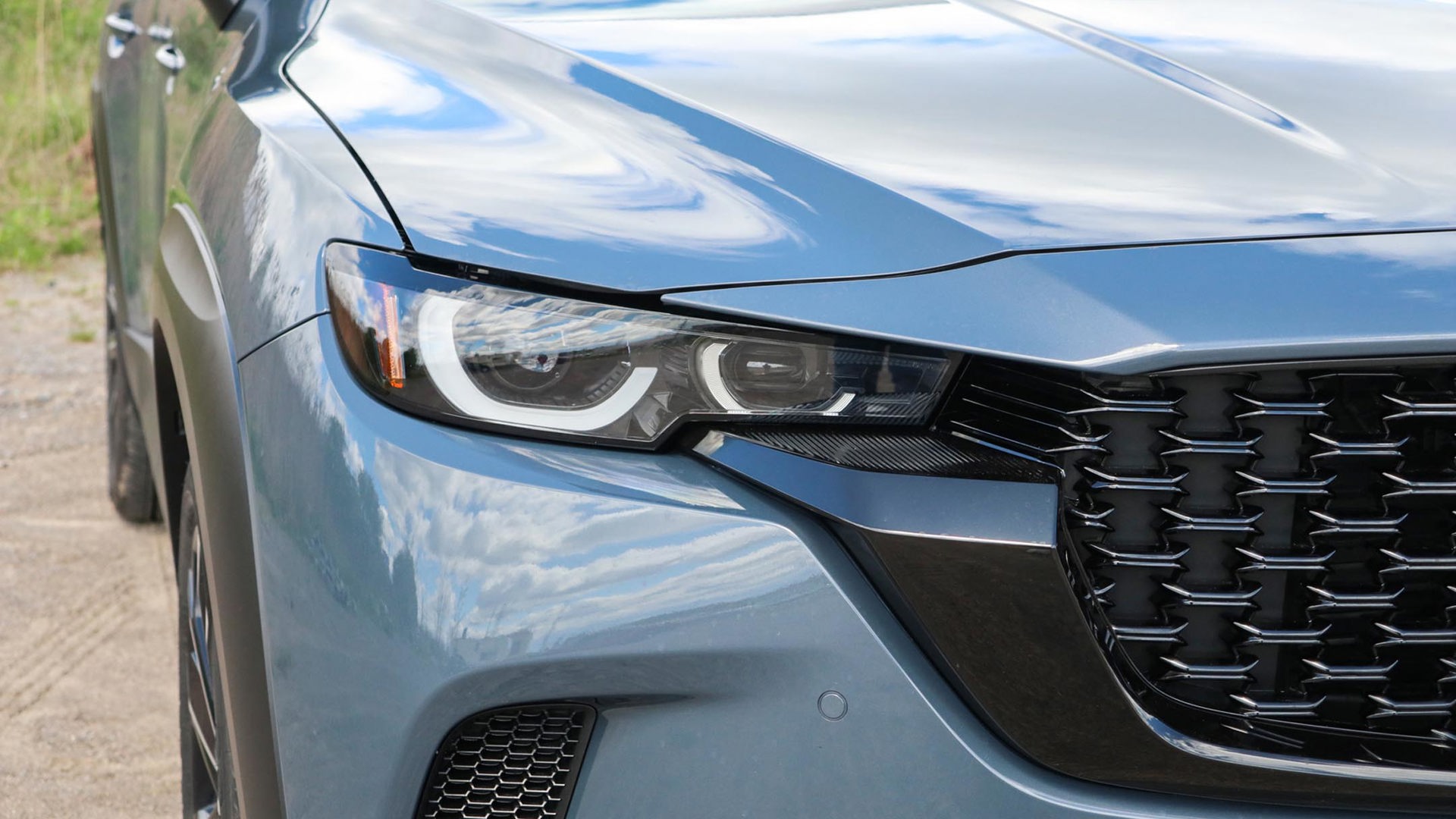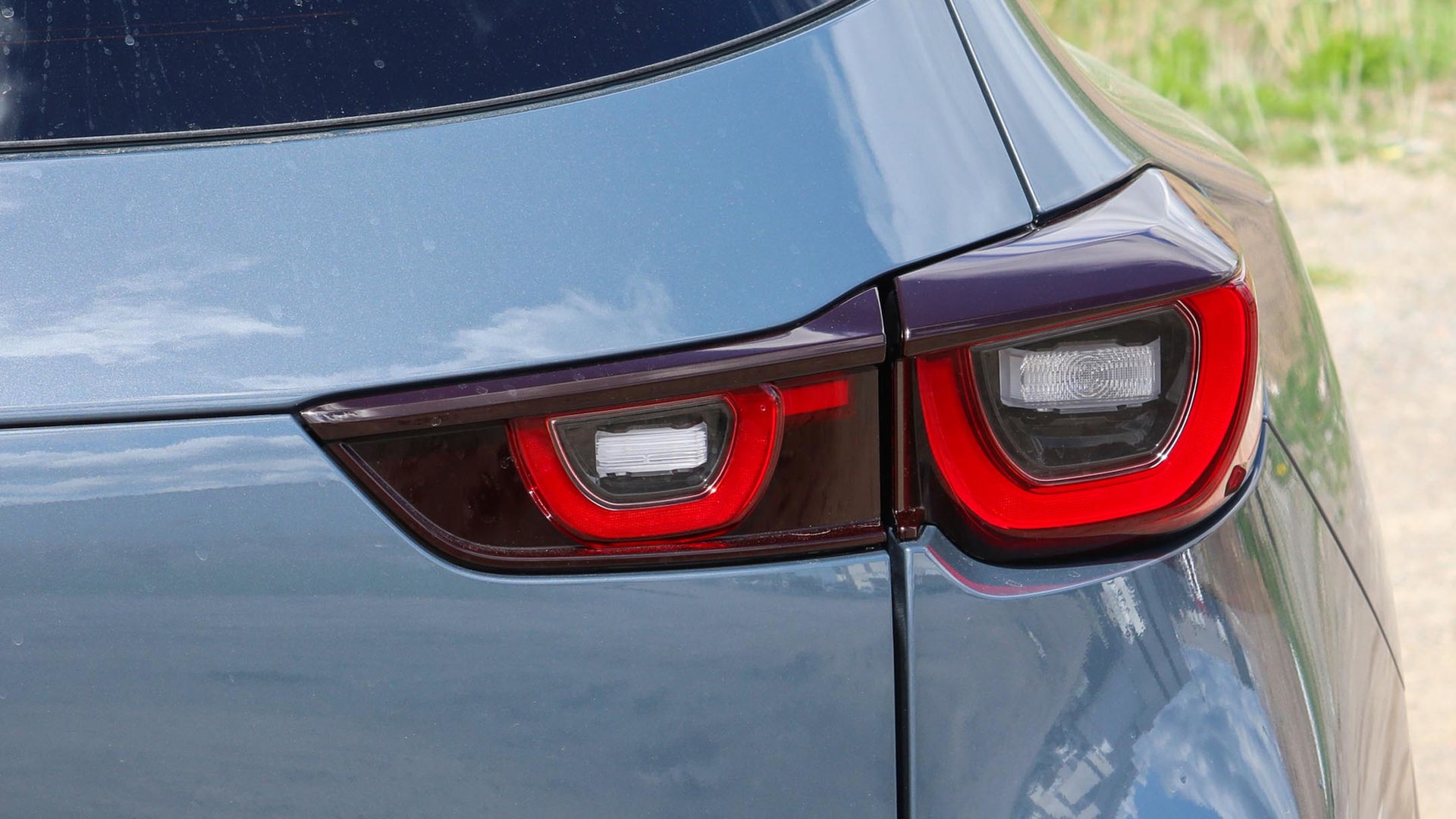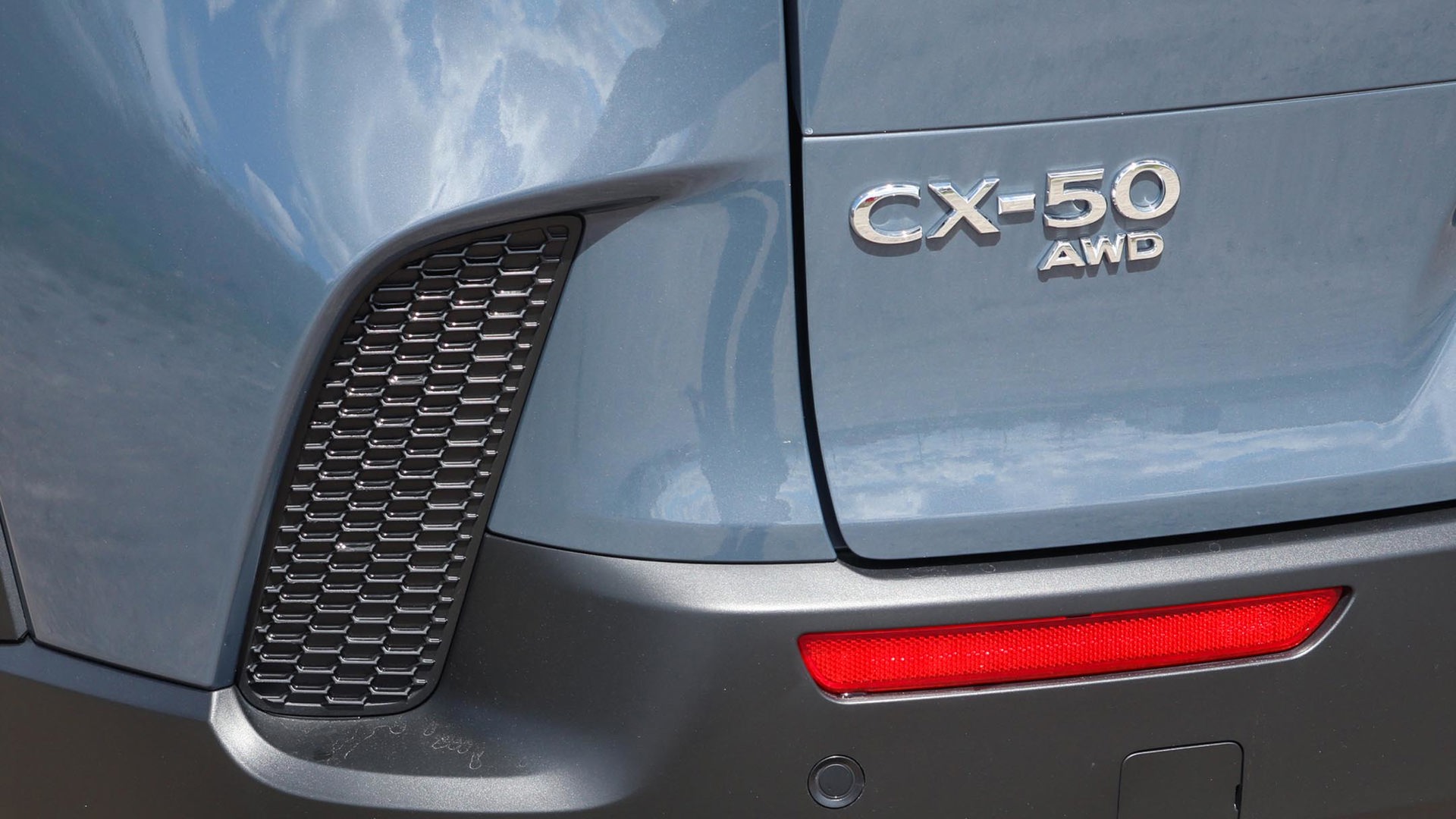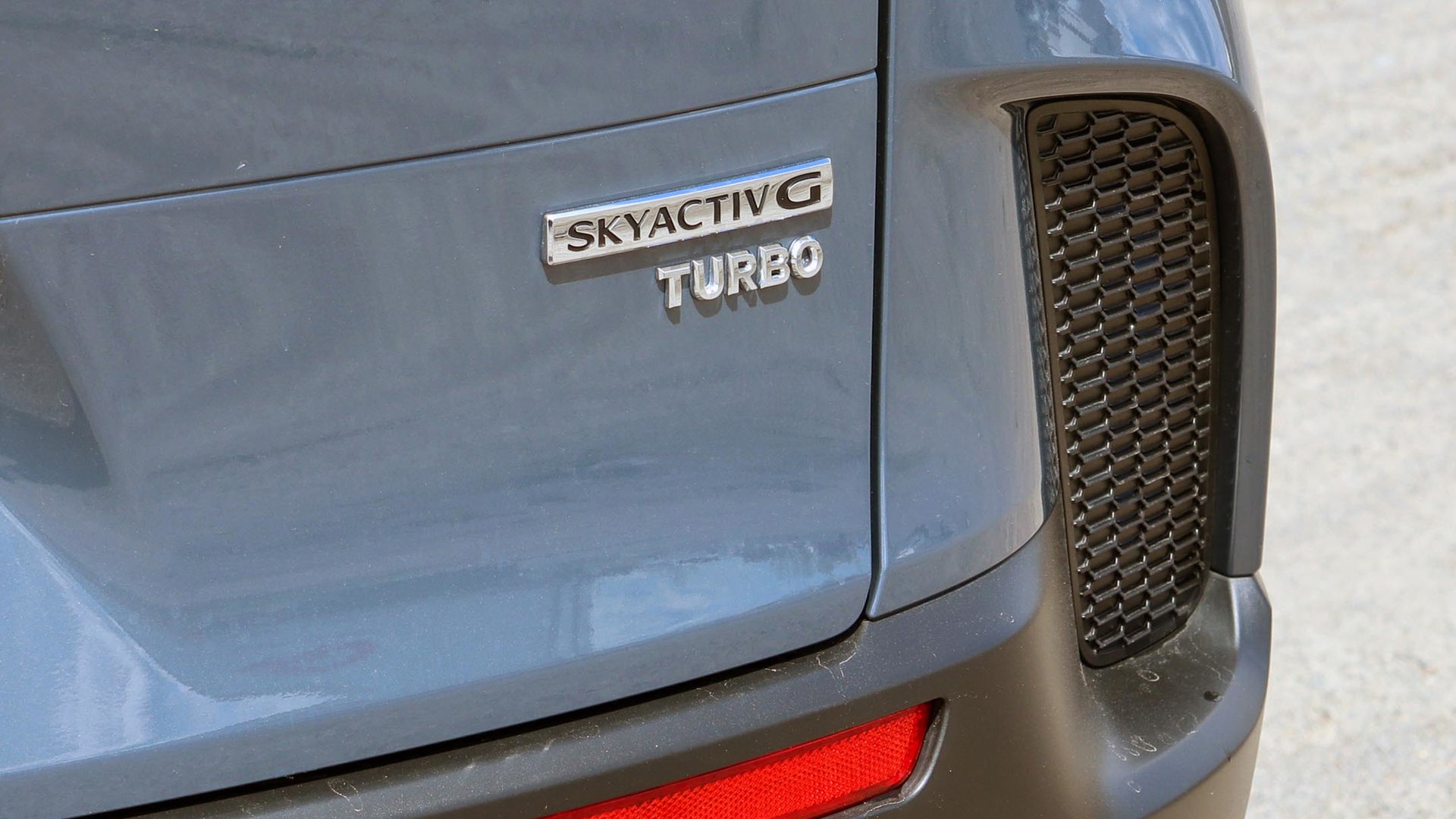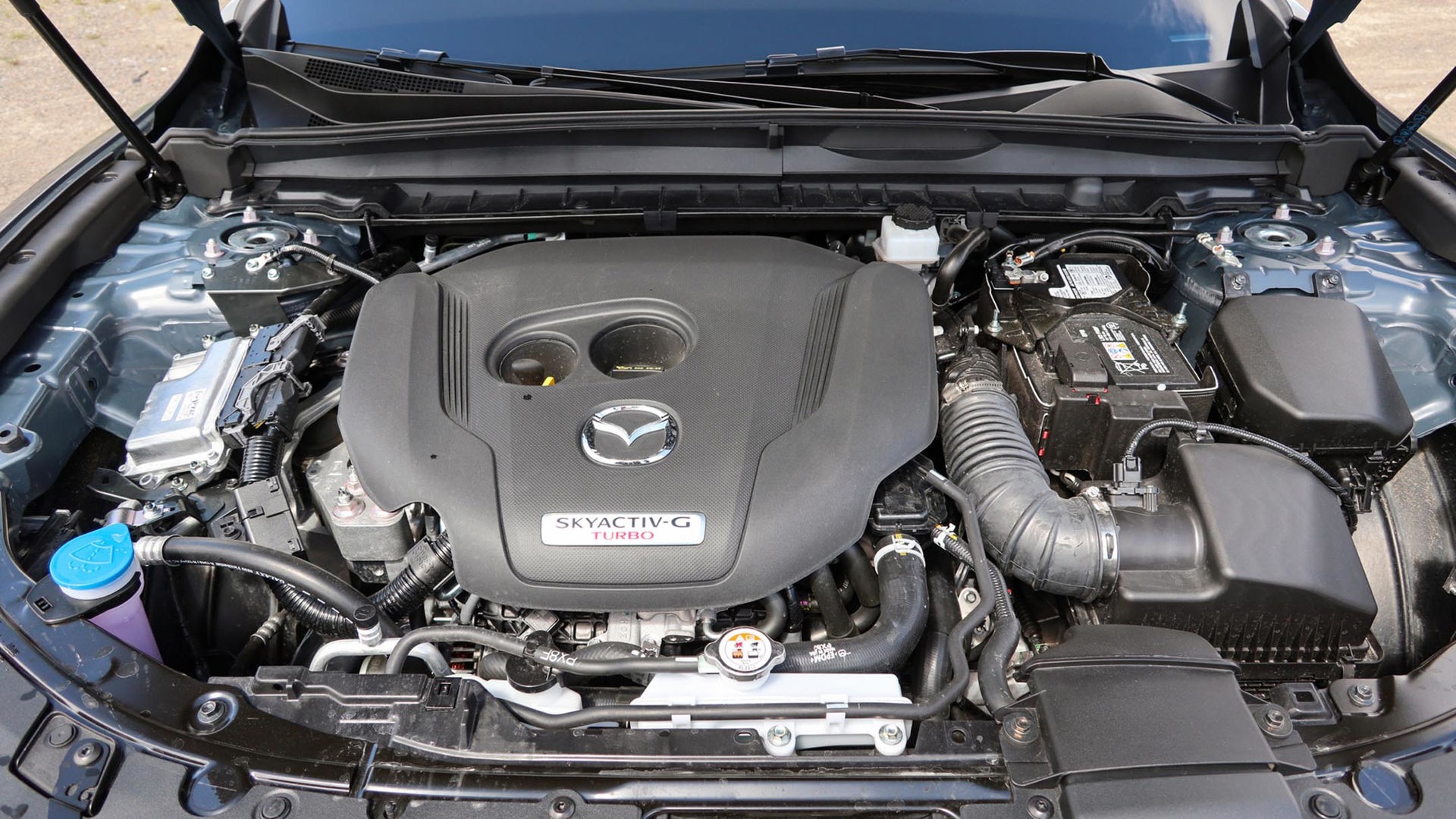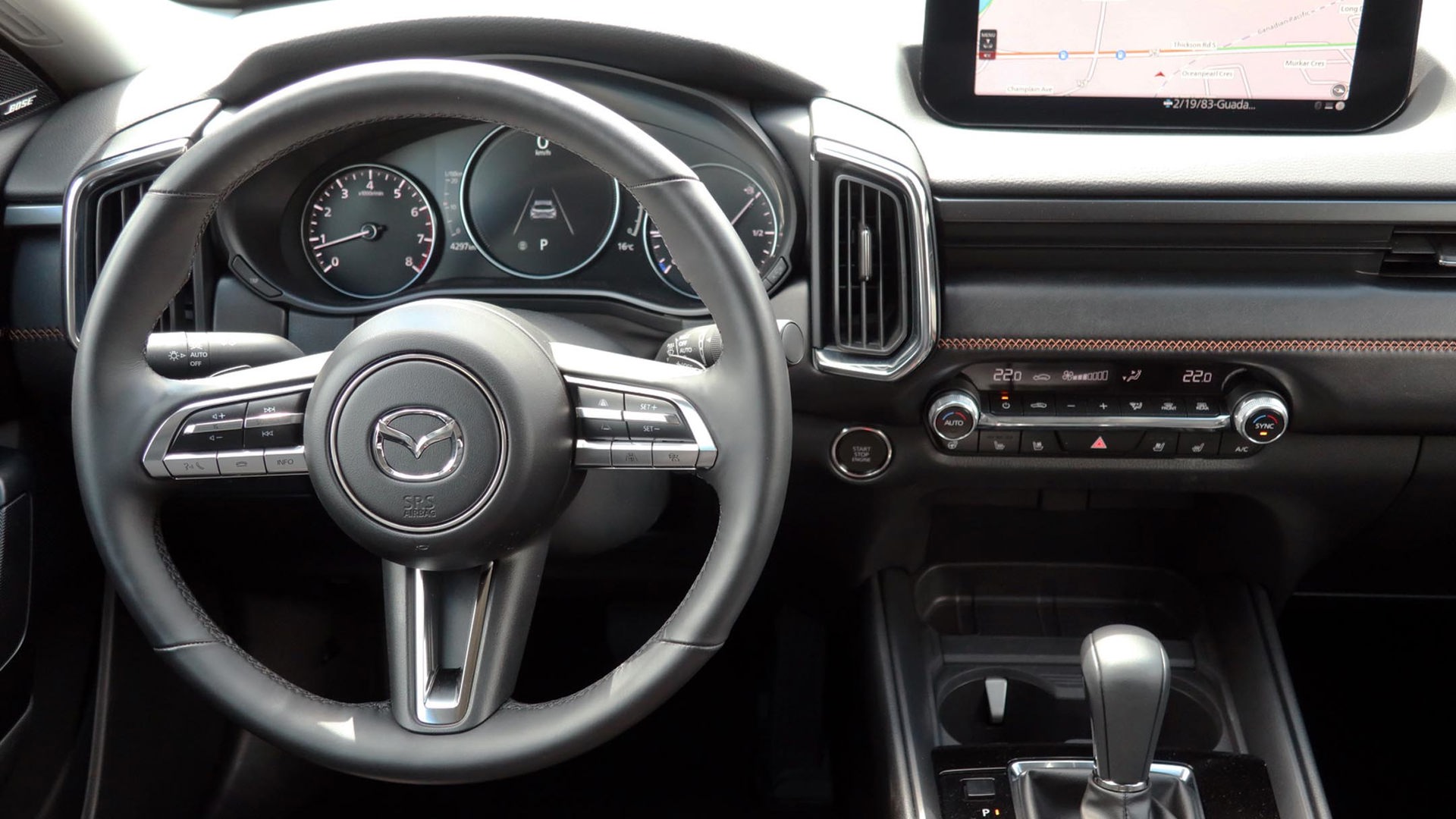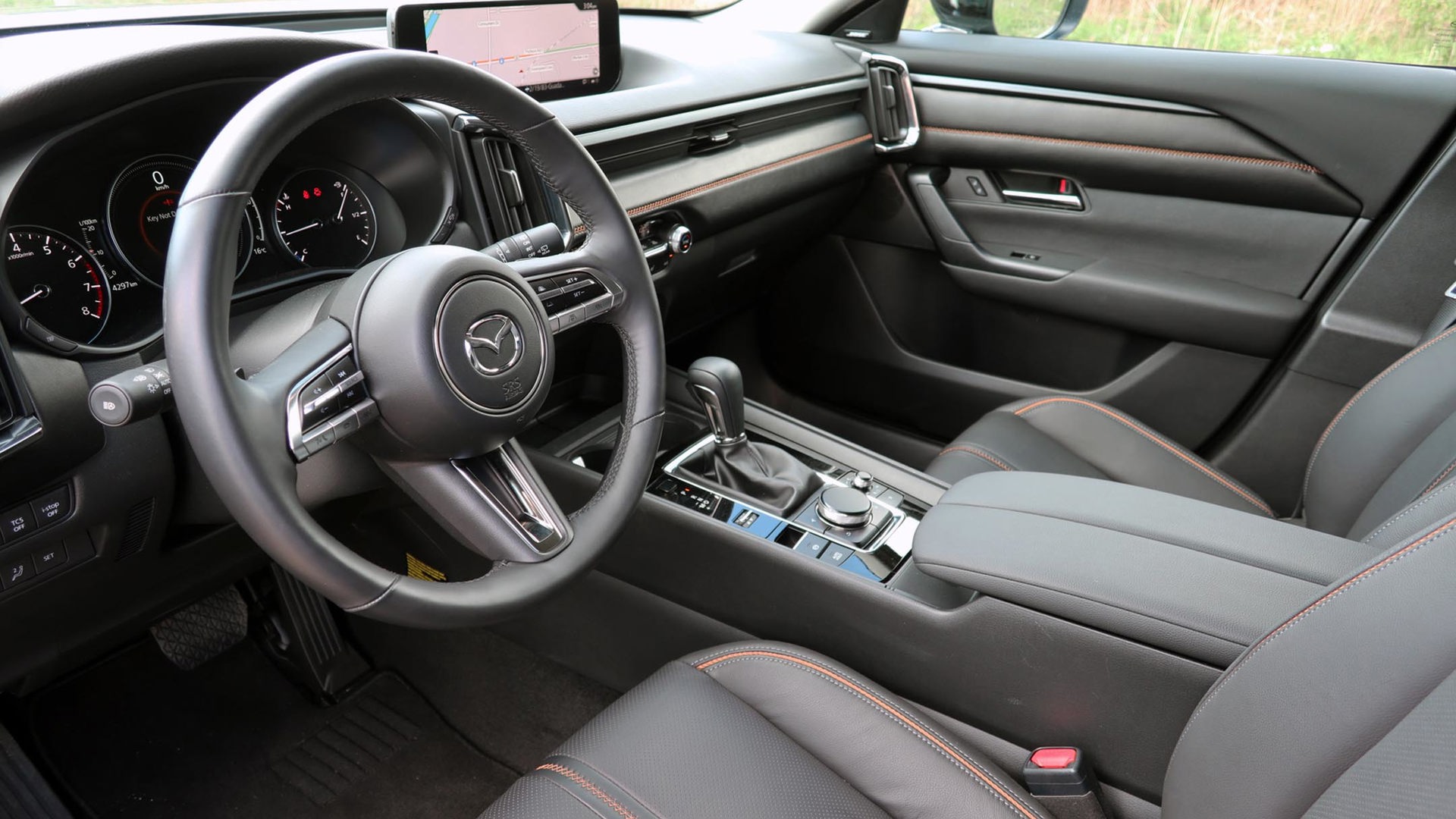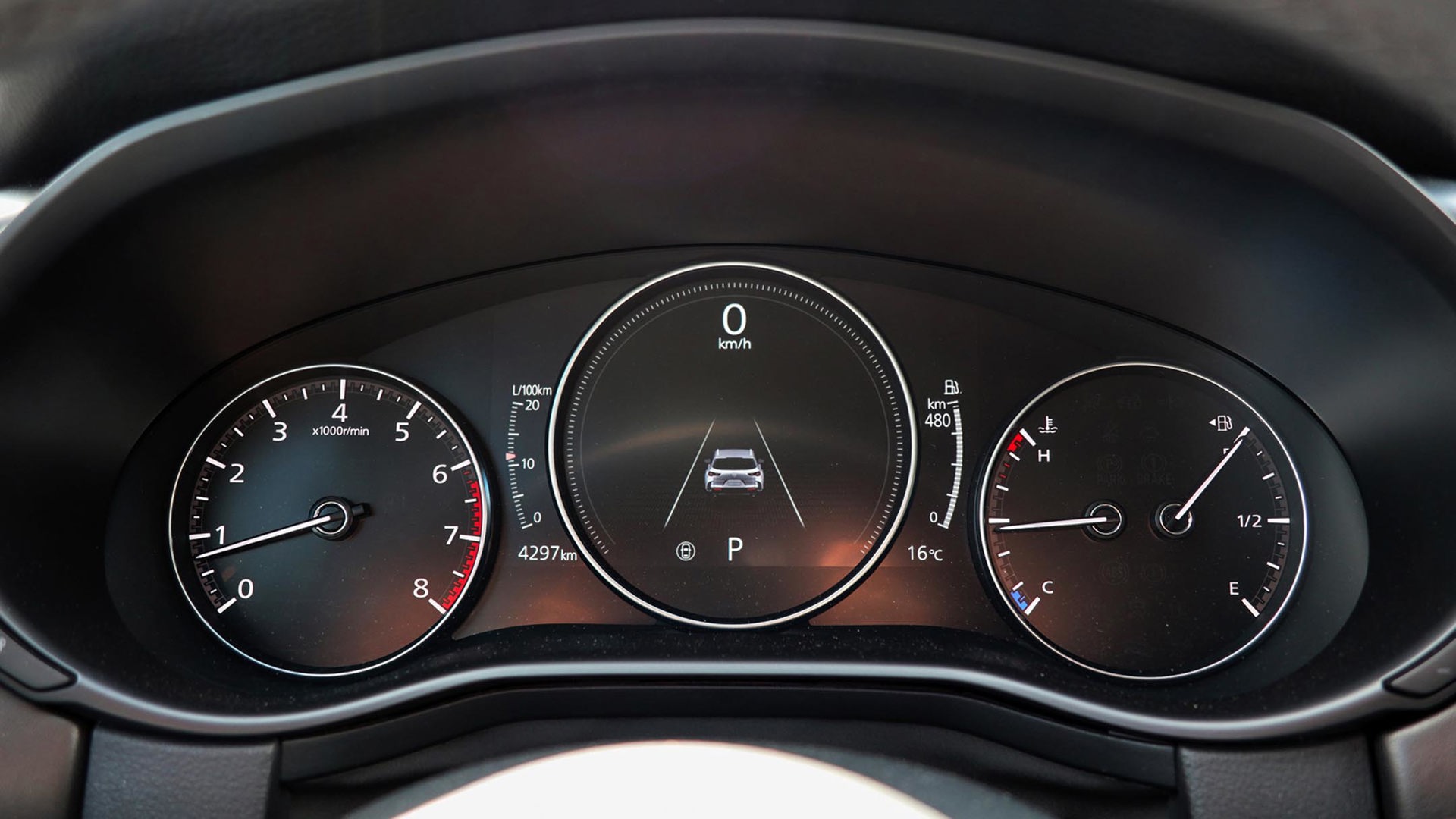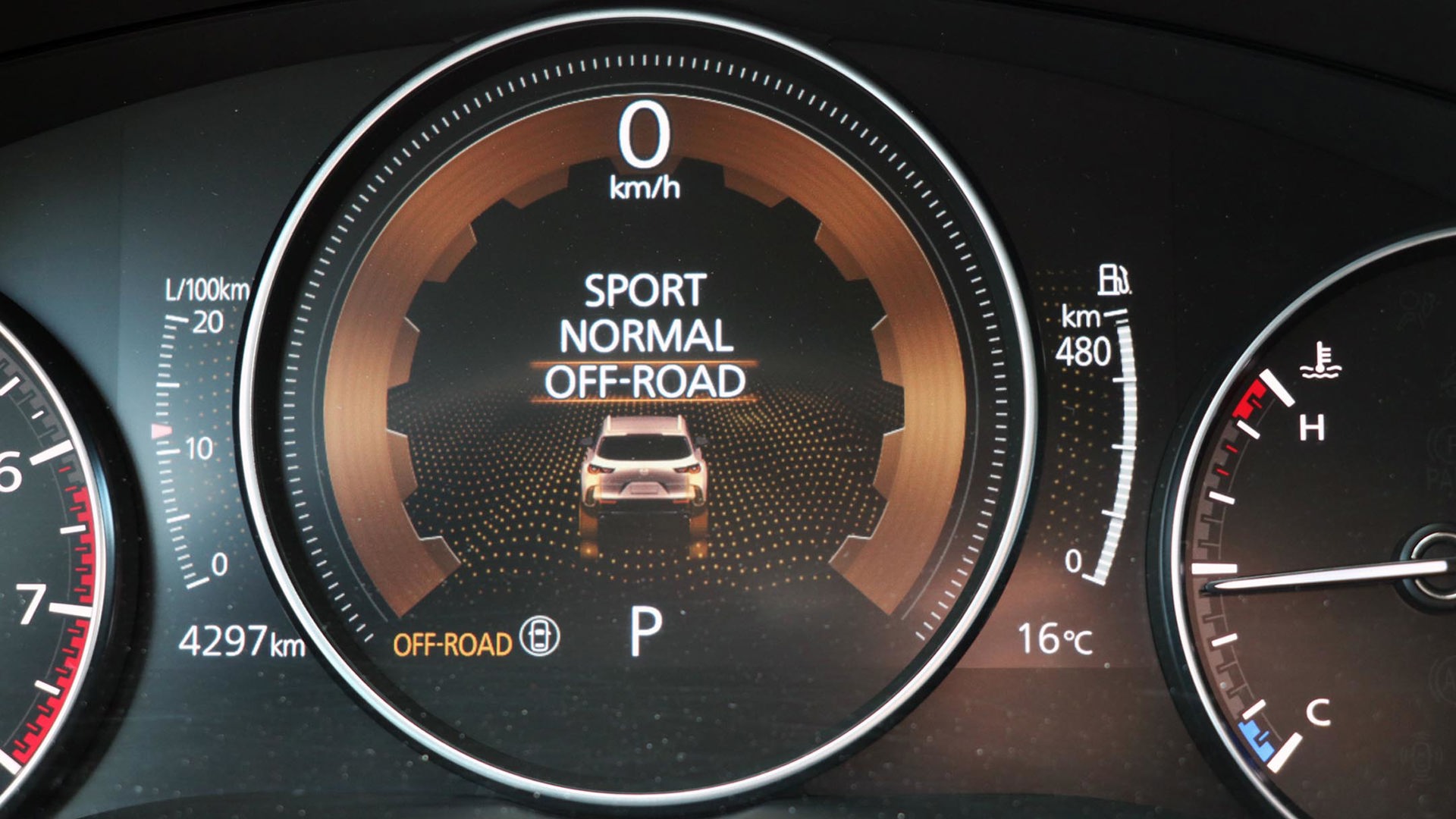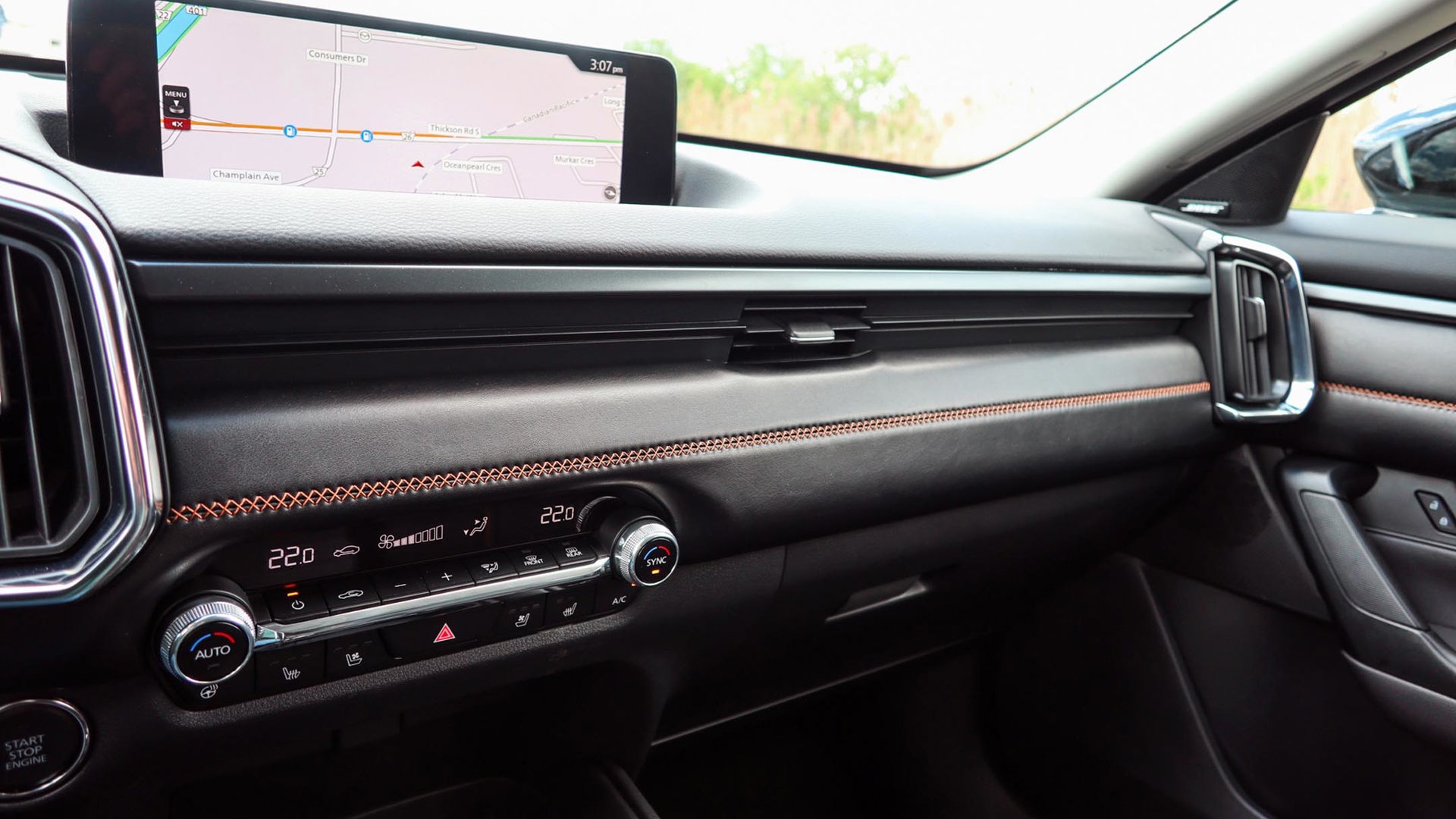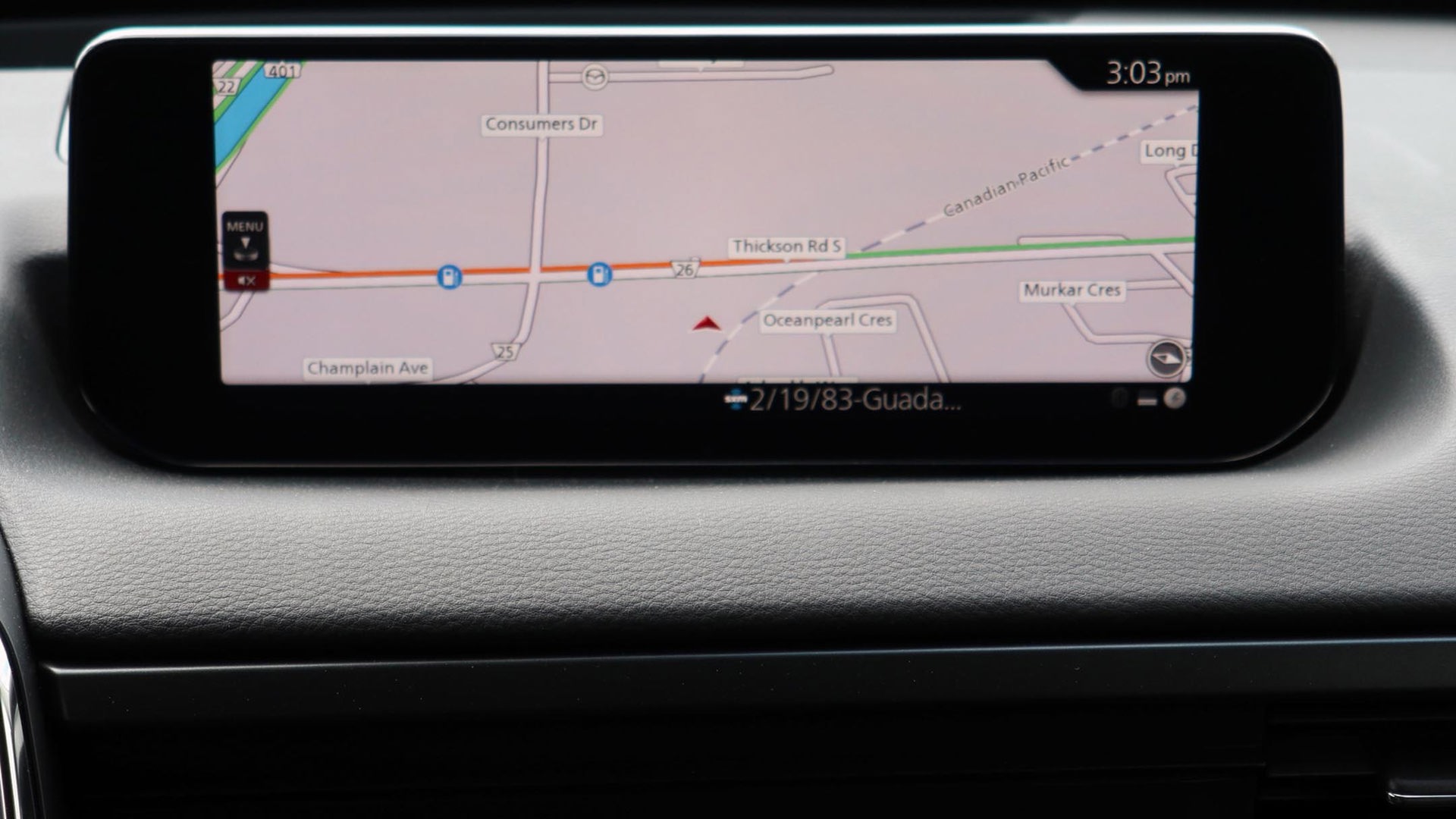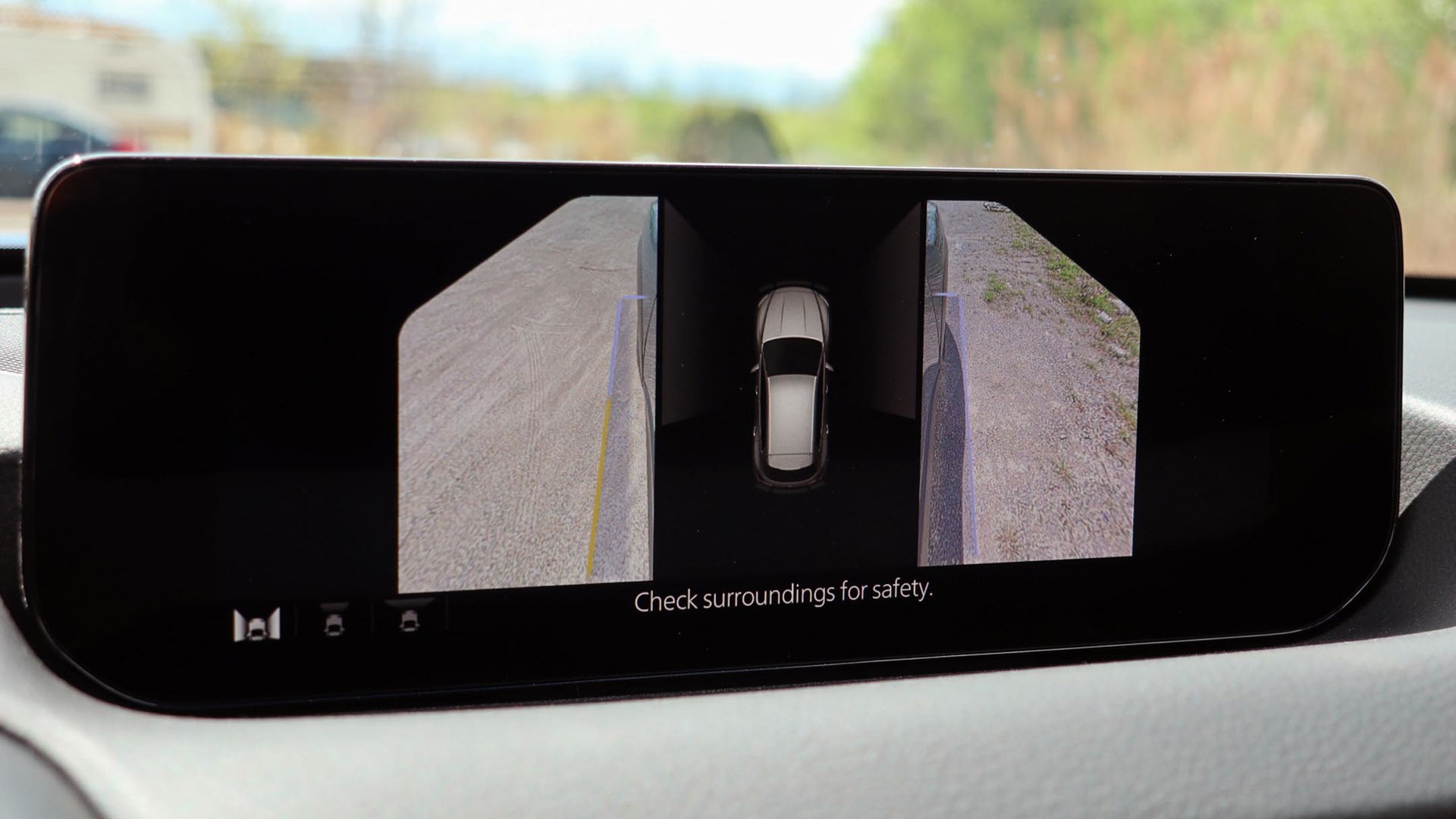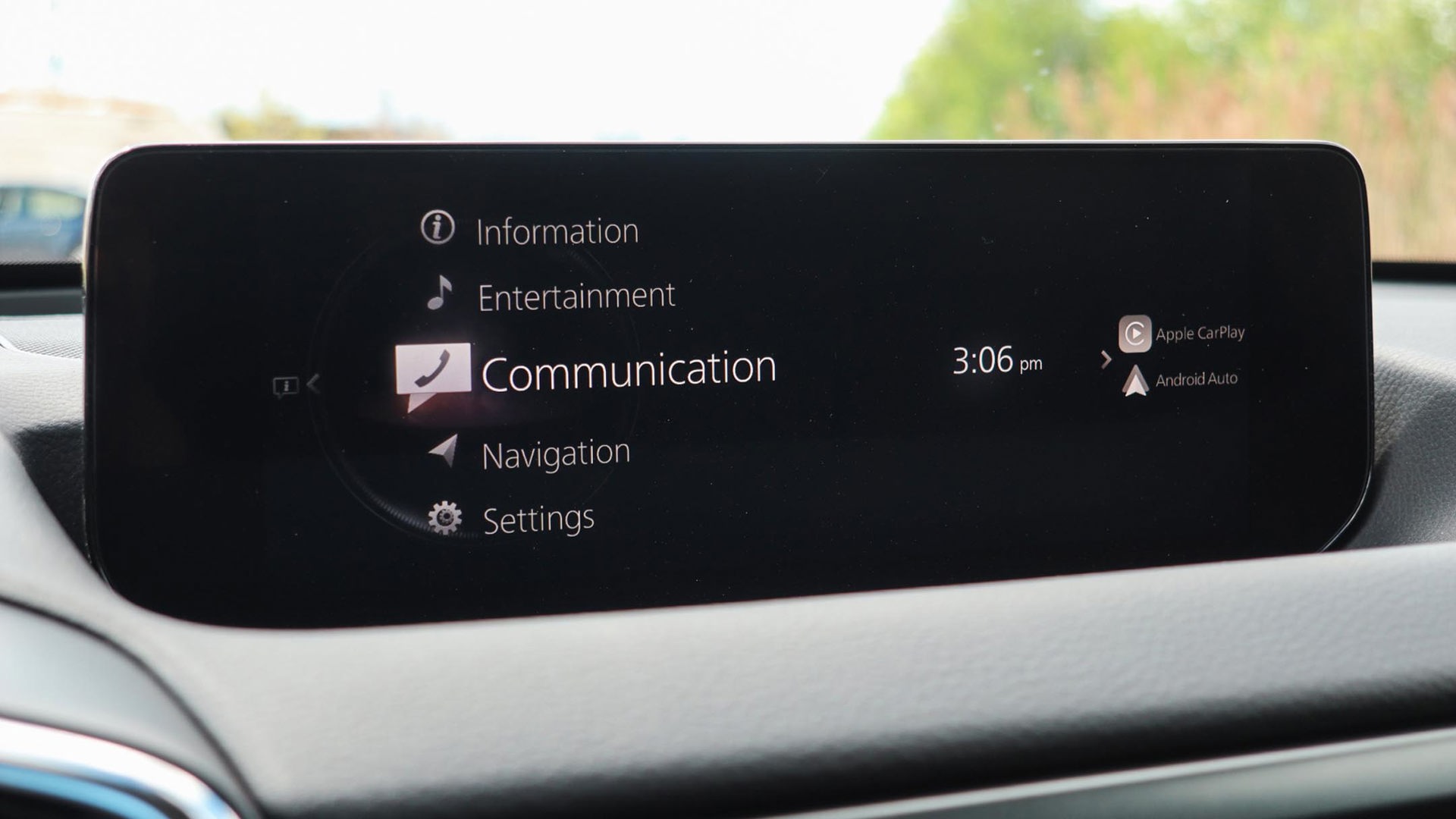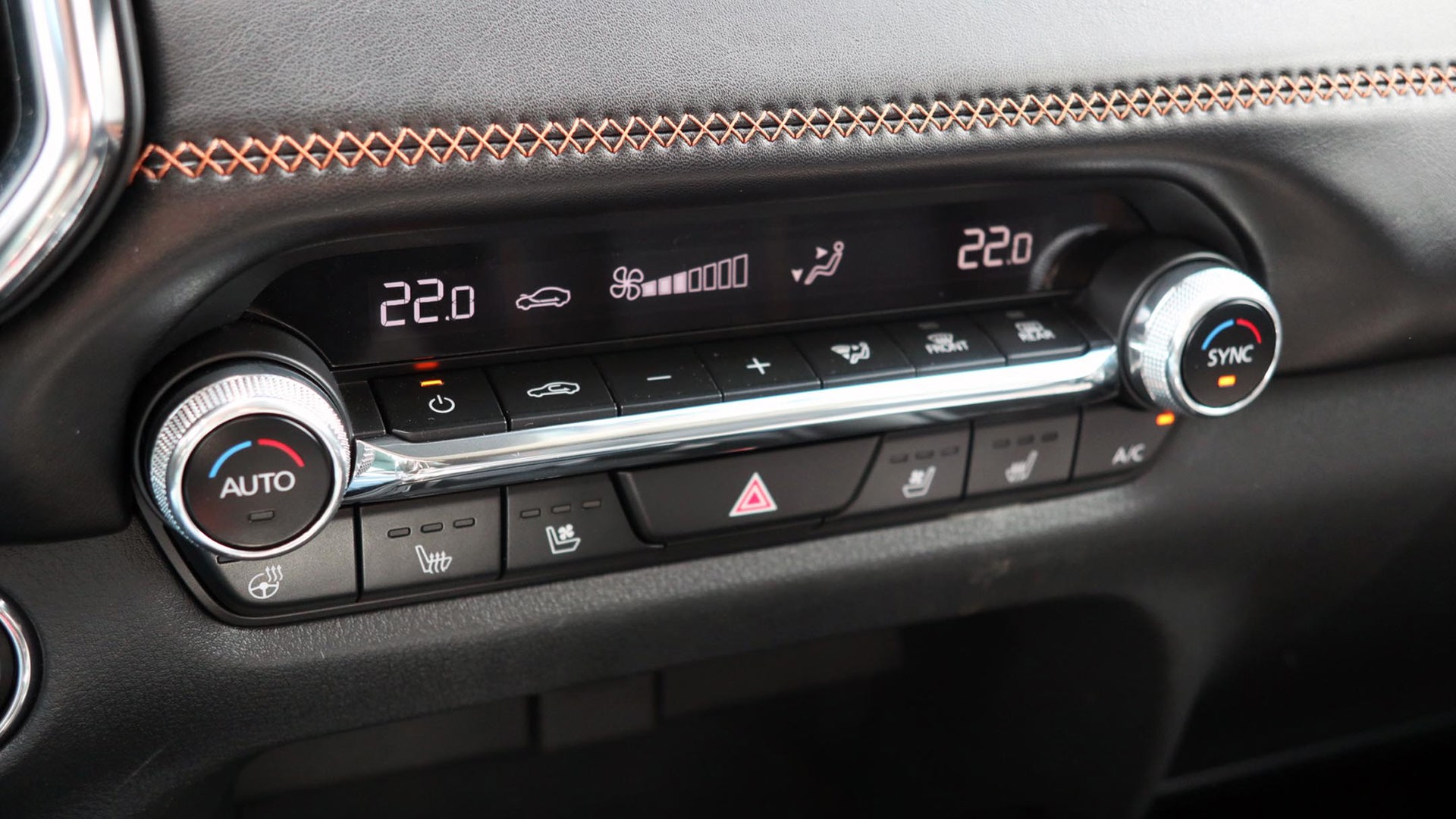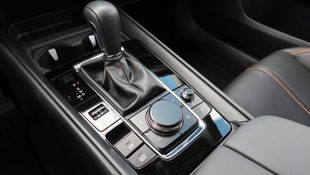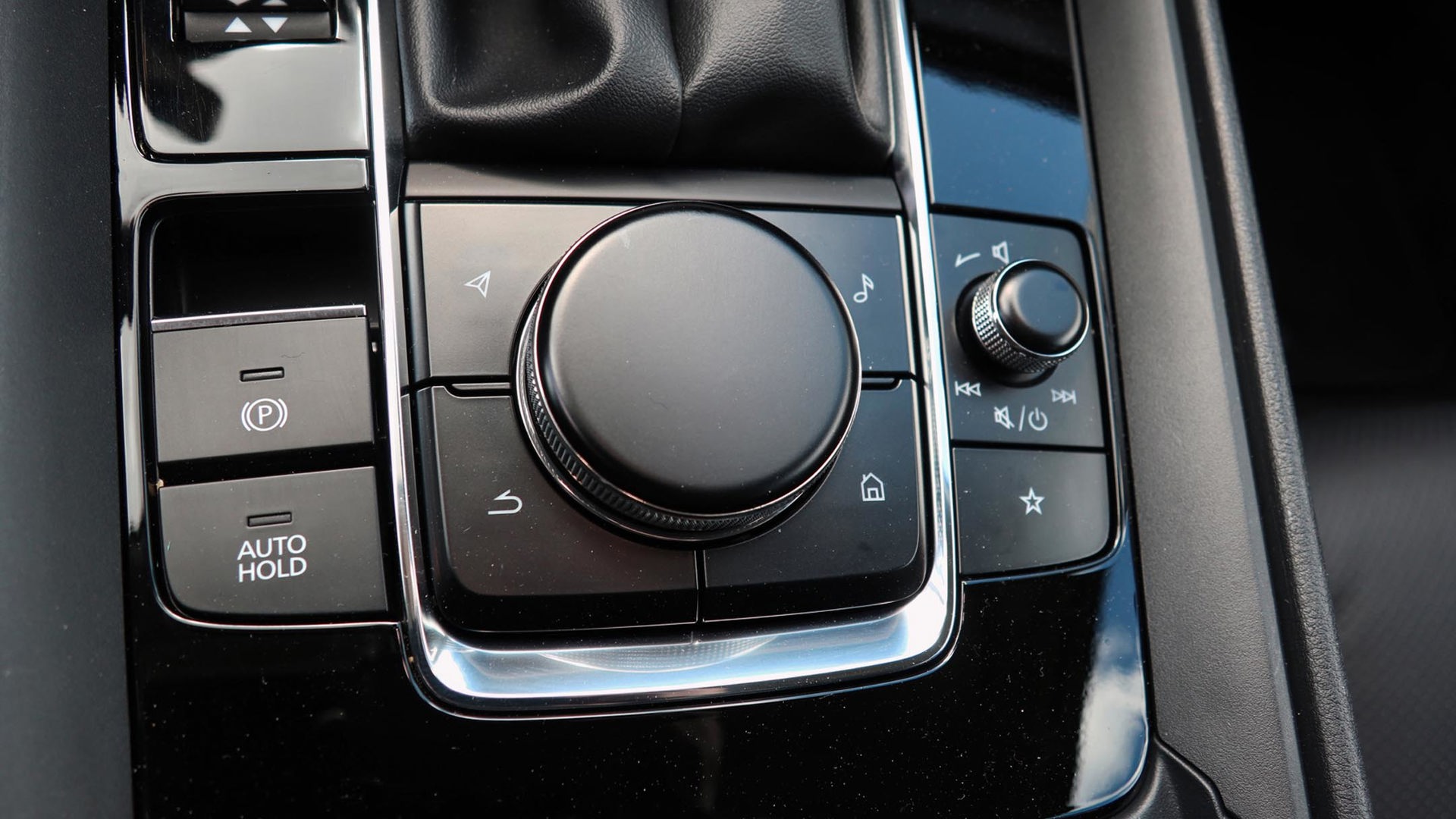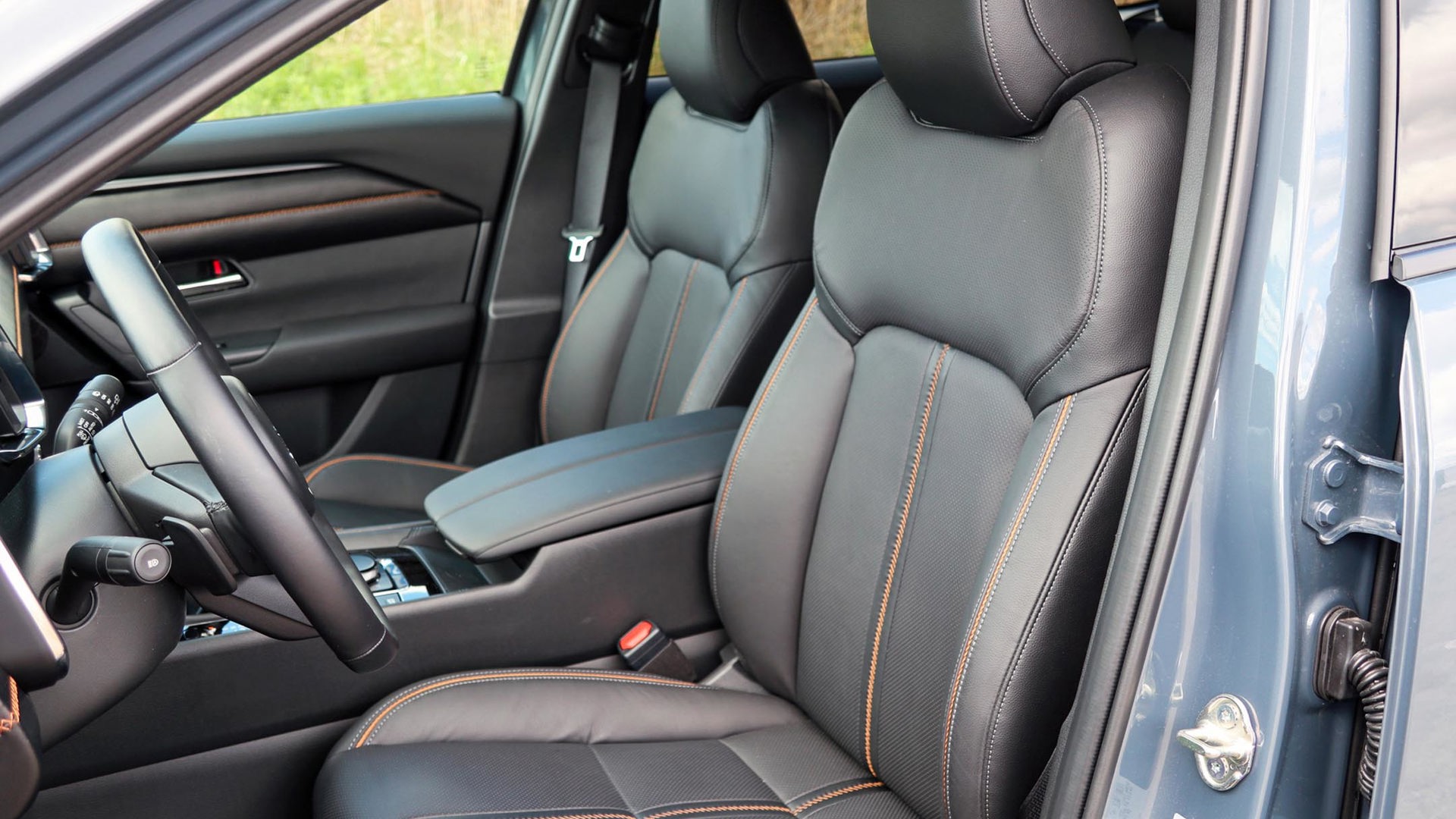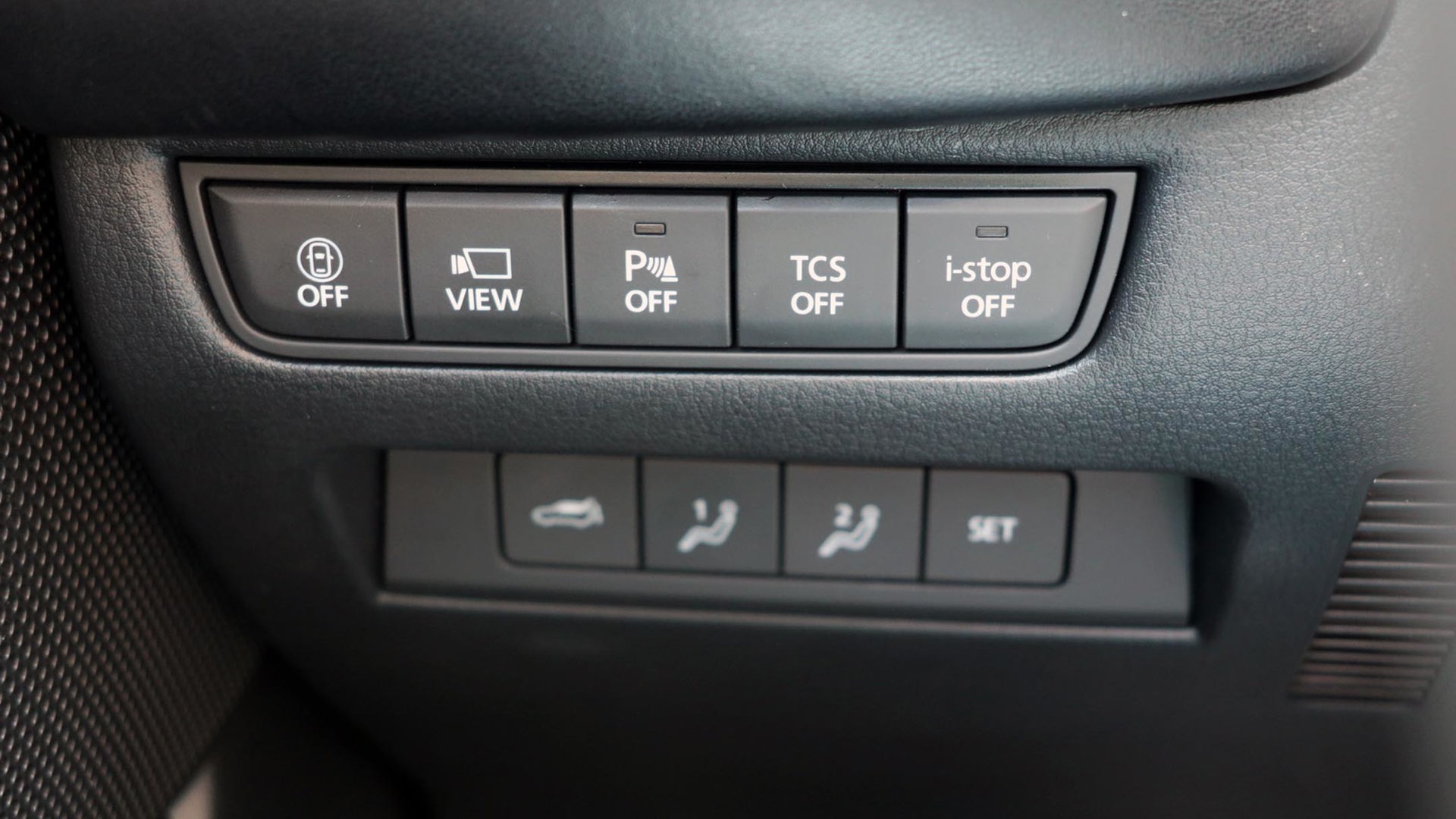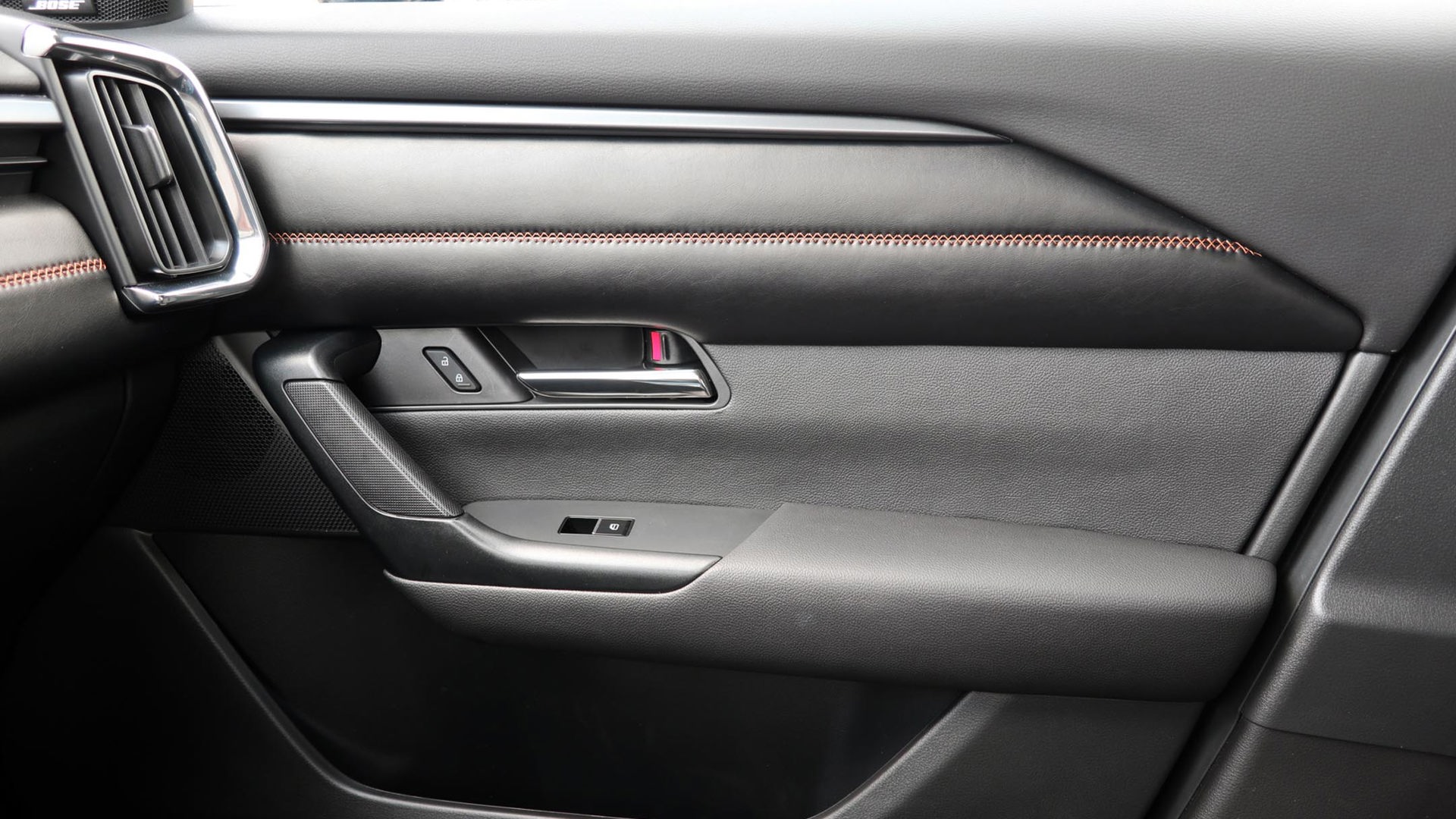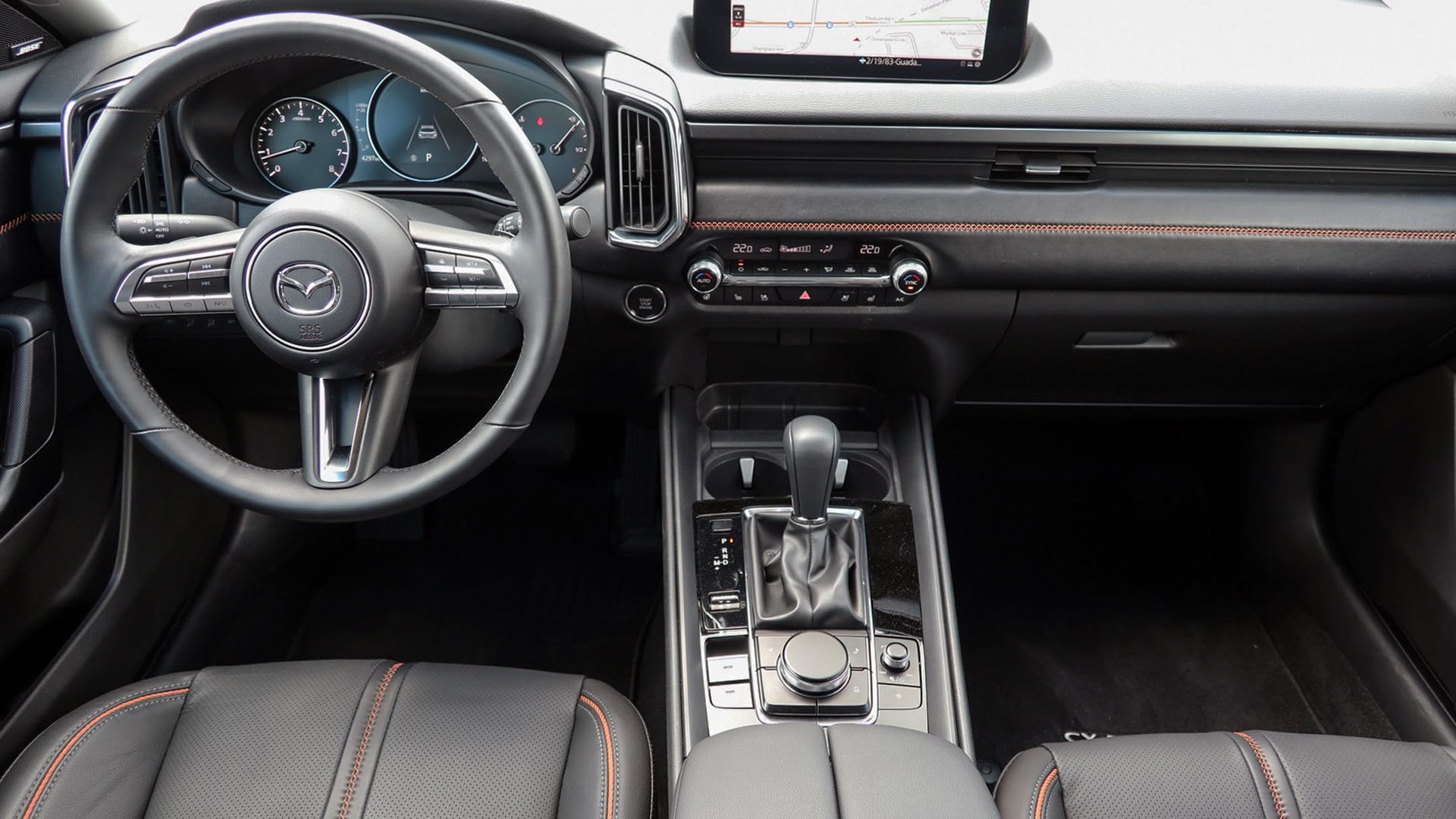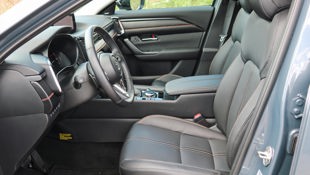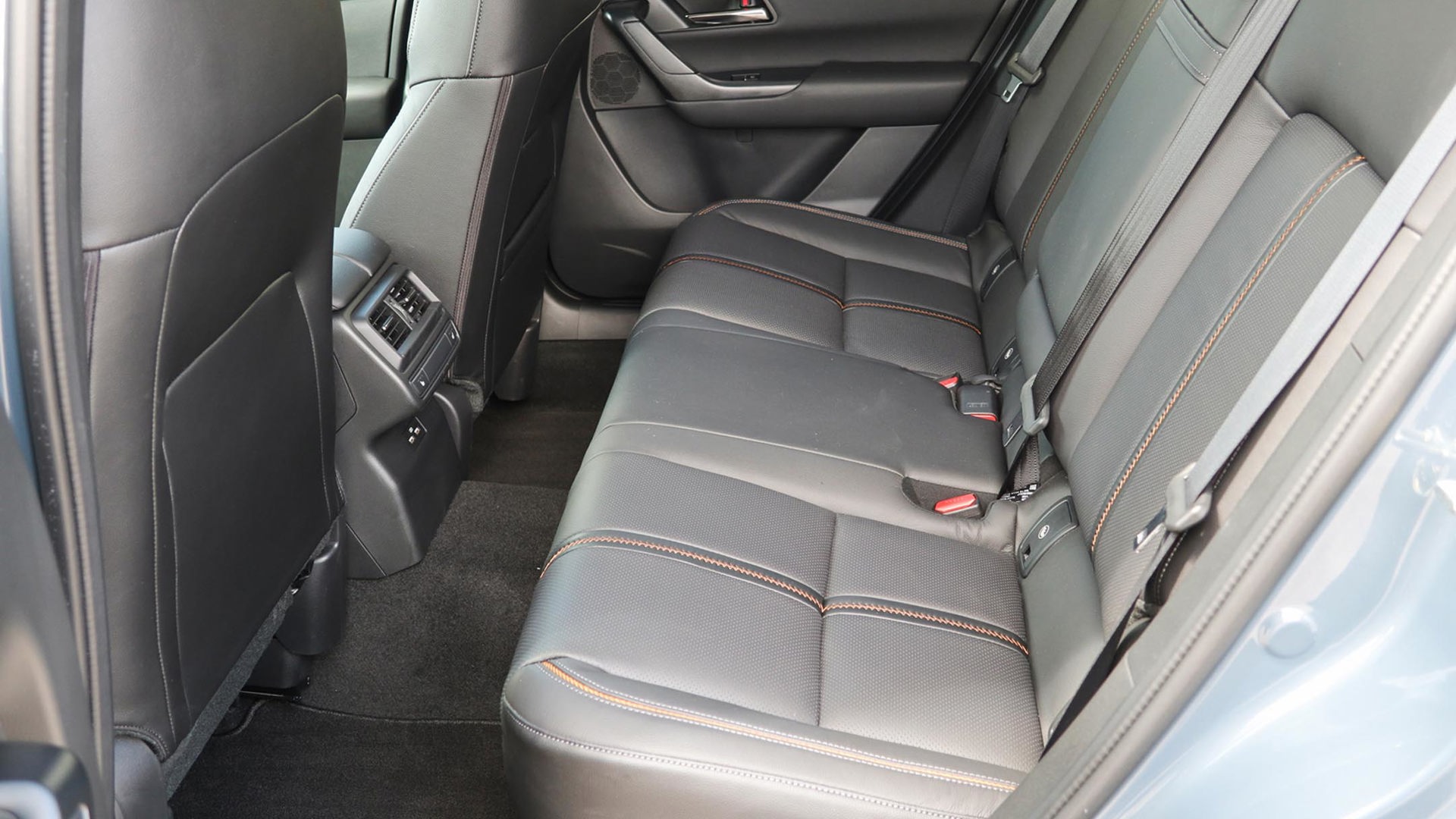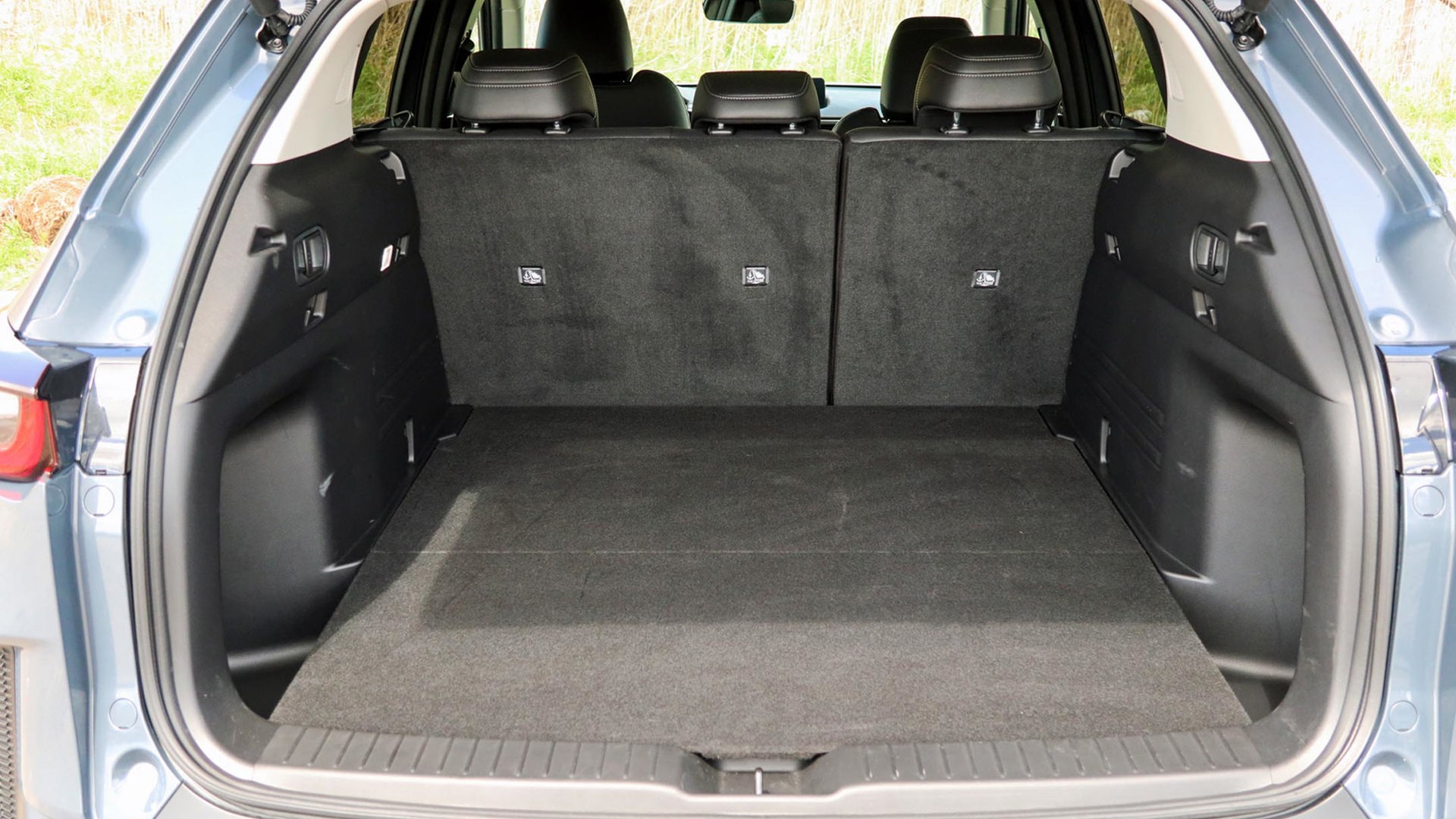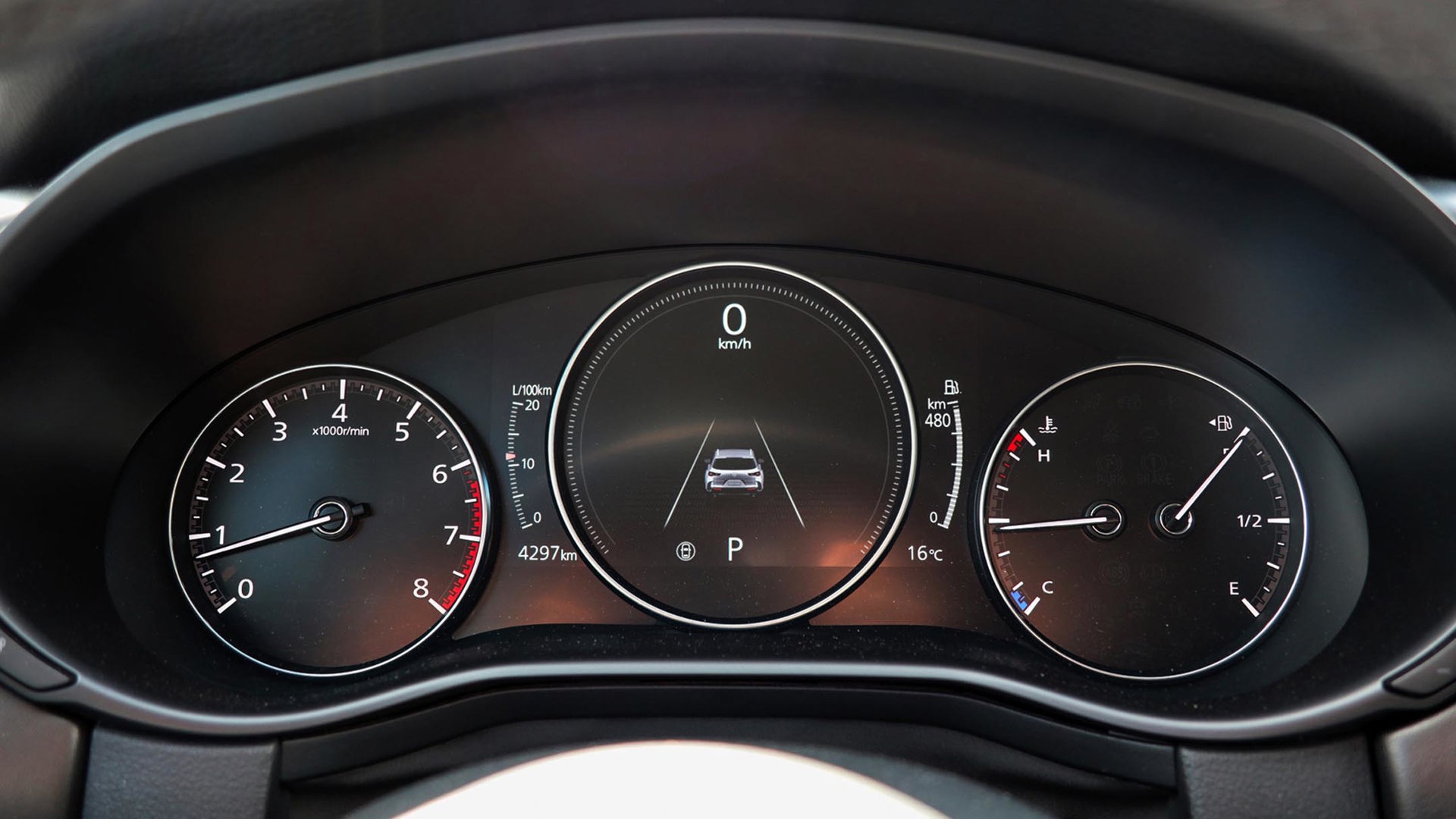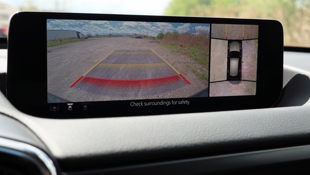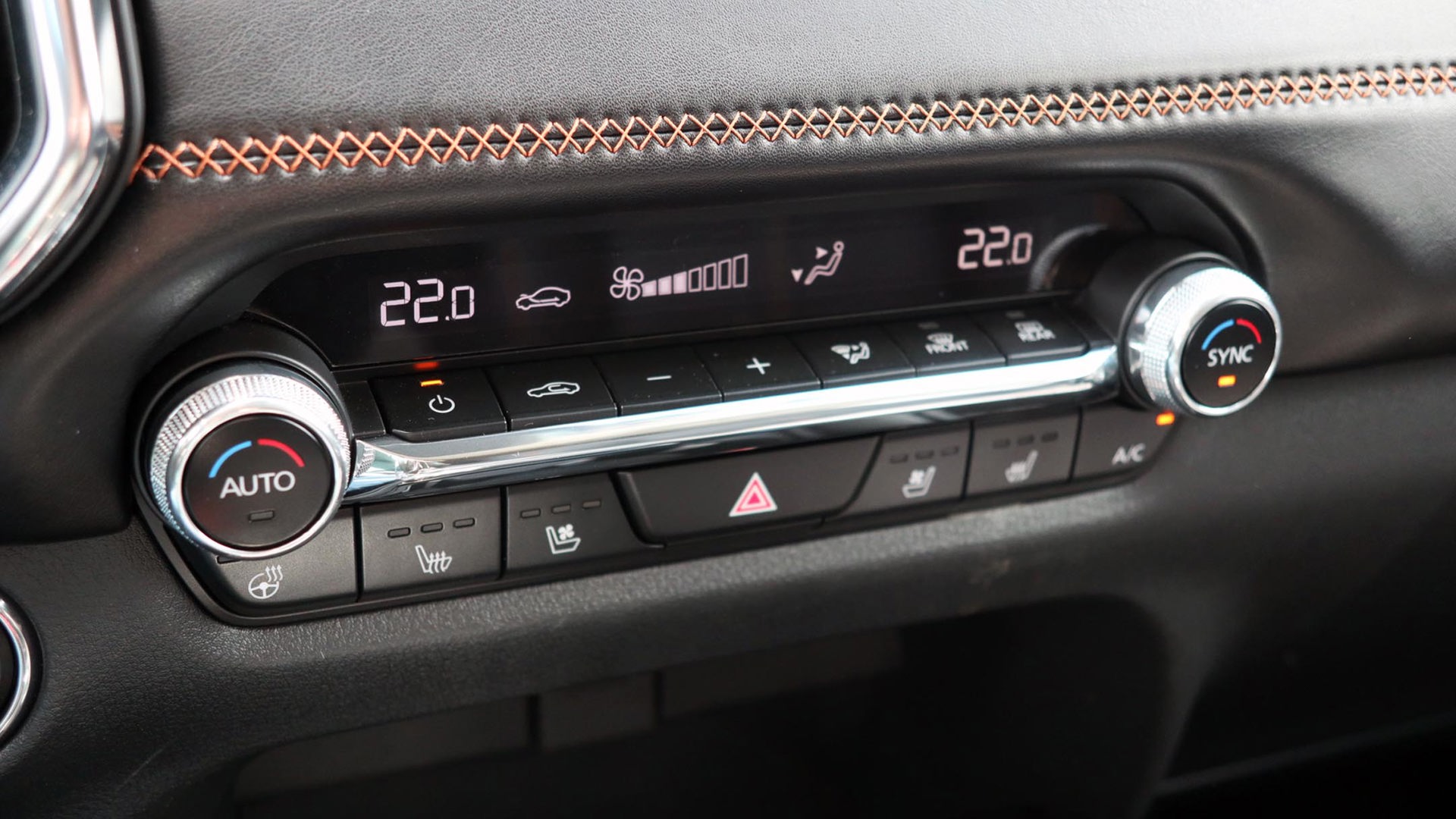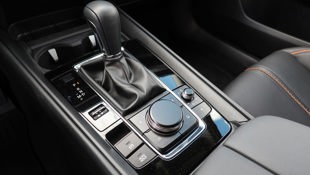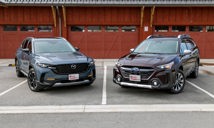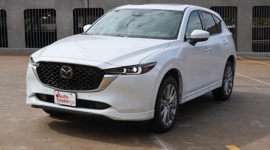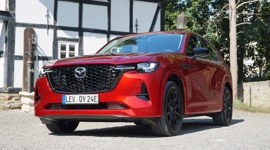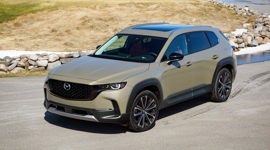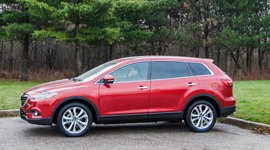 AutoTrader SCORE
AutoTrader SCORE
-
STYLING9/10
-
Safety8/10
-
PRACTICALITY8/10
-
USER-FRIENDLINESS7/10
-
FEATURES8/10
-
POWER8/10
-
COMFORT7/10
-
DRIVING FEEL9/10
-
FUEL ECONOMY8/10
-
VALUE8/10
An all-new model, the 2023 Mazda CX-50 is mindful of a CX-5 on steroids – but not too many of them.
The CX-50 is longer and wider than the CX-5 (but not that much bigger inside, and overall height is lower), with more ground clearance and standard all-wheel drive. It’s a great city driver that can tackle outdoorsy adventures as well.
It starts as the GS-L with non-turbo engine at $40,100, including a non-negotiable delivery fee of $1,950. The GT begins at $45,050 with that same engine, while I had the top-line GT Turbo. Its turbocharged engine adds $2,500, and I also had a coat of extra-charge paint, bringing my tester to 47,550 before taxes.
Styling: 9/10
The good-looking CX-50 is styled similarly to the CX-5, but with differences including squared-off wheel arches, lower-body cladding, and unique taillights and fascia. It’s more aggressive-looking but doesn’t go over the top, and for the most part the cladding looks integrated rather than tacked-on.
The interior is plain but handsome, with good-quality materials and some touches, such as my tester’s orange contrast stitching on the seats, dash, and door panels, that make it look better than its price.
Safety: 8/10
The CX-50 hasn’t yet been rated by the United States National Highway Traffic Safety Administration (NHTSA) or the Insurance Institute for Highway Safety (IIHS), so we’re unable to add that to our score.
But it does come with a substantial list of standard driver-assist features, including emergency front braking with pedestrian detection, blind-spot monitoring with rear cross-traffic alert, adaptive cruise control with stop-and-go function, lane-keep assist, automatic high-beam headlights; and its back-up camera, a mandatory requirement on all new vehicles, is a wide-angle. The GT further adds a head-up display with traffic sign recognition, blind-spot assist (which helps guide you back in your lane if you move over when a vehicle is alongside), 360-degree camera, front and rear parking sensors, and low-speed emergency rear braking.
Features: 8.5/10
The CX-50 comes fully equipped at each trim level, with no available options other than premium paint colours, which range from $250 to $450. Along with its standard safety features, the GS-L includes such items as 17-inch wheels, a power tailgate, sunroof, roof rails, LED headlights, rain-sensing wipers, 10.25-inch infotainment screen, wireless Apple CarPlay and Android Auto, heated synthetic leather-trimmed seats, a heated steering wheel, 10-way power driver’s seat, dual-zone automatic climate control, auto-dimming mirror, and cruise control.
The GT trim levels – turbo and non-turbo – further add such items as 20-inch wheels, power-folding mirrors, auto-dimming driver’s mirror, auto-levelling headlights, premium stereo, navigation, satellite radio, wireless charger, leather-trimmed upholstery, ventilated front seats, heated rear seats, and driver’s seat memory.
User Friendliness: 7/10
The CX-50’s climate controls are fairly straightforward with their dials and toggles. But some systems could be better designed, such as the wheel-mounted cruise control. The bottom buttons use dark icons on metal, so they’re hard to see. To increase or decrease the adaptive system’s following distance, you tap small recessed buttons that are hard to hit accurately, while it’s very easy to hit the raised button that separates them, and that one cancels the cruise control entirely. I used up a lot of good profanity on them.
The infotainment system is primarily operated with a console-mounted controller that’s not difficult on its own, but some functions require far too many steps. For example, to adjust the height of the head-up display – a frequent requirement if differently-sized drivers share the car – you hit the Home button, turn the dial to Settings, push the dial to get In-Vehicle Displays, push again to get Active Driving Display, and push again to get the Adjustment menu. General Motors (GM), on the other hand, gives you an up-down toggle on the dash. One final minor complaint is the centre console bin’s twin butterfly-style lids. You’ll want to open both for enough access room, but each has its own button rather than one that pops both up together.
Practicality: 8/10
With a cargo capacity of 889 L with the rear seats up, the CX-50 is mid-pack with some competitors – more volume than the Jeep Cherokee, Kia Sportage, or GMC Terrain, but less than the Subaru Outback. The liftover is fairly low for easier loading, and the rear seats fold almost flat for longer cargo. Small-item storage isn’t as good as some, but you do get an open front console cubby. The non-turbo can tow up to 907 kg (2,000 lb), while the GT Turbo can pull up to 1,587 kg (3,500 lb).
Comfort: 7.5/10
The seats are well-designed and supportive, and comfortable for long-distance driving, but the rear seats are a bit tight. Although it’s larger overall than the CX-5, the CX-50’s interior dimensions are only marginally larger for front and rear legroom, and it has slightly less front and rear headroom than its smaller sibling. It’s a compact crossover and should be considered as such if you’re going to be carrying tall occupants. But once everyone’s inside, the ride is smooth and well-composed, and the cabin is quiet.
Power: 8.5/10
The GT Turbo uses a turbocharged 2.5L four-cylinder that makes 227 hp and 310 lb-ft of torque on 87-octane gasoline, but it’s set up so if you’re willing to pump 93-octane gas in (if you can find it), you’ll get 256 hp and 320 lb-ft of torque. Non-turbo models use a 2.5L that makes 187 hp and 186 lb-ft of torque. Both engines are mated to a six-speed automatic transmission. While it won’t be for a while yet, Mazda says a hybrid powertrain is coming as well.
This turbo engine does everything right, even if you don’t opt for the highest-test fuel. It’s quick off the line and passes effortlessly at highway speeds, but it’s calm and smooth in traffic. The transmission is a good match to it, switching gears quickly and unobtrusively.
Driving Feel: 9/10
Mazda is generally the benchmark for steering and handling in the mainstream market, and the CX-50 carries through on that. The steering is sharp, the turning circle is tight, and it feels light and nimble in corners. It’s an absolute pleasure to drive.
The toggle-activated drive modes include an off-road setting that adjusts the engine and transmission response, and also the torque split between the front and rear axles, to make it over rougher terrain. It doesn’t have locking differentials and obviously isn’t meant for serious off-roading, but it will get to your off-the-beaten-path campsite and then handle the paved roads smoothly on the way home.
Fuel Economy: 8/10
The CX-50 Turbo is rated at 10.4 L/100 km on the highway, 8.1 in the city, and 9.3 in combined driving. Unusually, I came in below that in my week with it, racking up 8.7 L/100 km overall.
That 9.3 L/100 km combined isn’t a standout in the segment but keeps up with a cross-section of its all-wheel-drive competitors. Across their engine choices, the Subaru Outback ranges from 8.2 to 9.1; the Jeep Cherokee from 9.1 to 9.8; the GMC Terrain at 9.0; and the Kia Sportage from 9.1 to 9.6 L/100 km.
Value: 8/10
At a range of $40,100 to $47,550, the CX-50 isn’t inexpensive, but its long list of features and the quality of interior materials give the impression of a pricier vehicle. I also like that you can get the GT with a non-turbo or turbo engine, since many automakers bundle their top-line trim features only with the top engine choice.
It’s important to compare features, because the CX-50 is pricier than most rivals (keeping in mind that the Mazda is a 2023 and others are still model-year 2022, so their prices may rise a bit). Among all-wheel drive-equipped competitors, and with delivery fees included, the Kia Sportage ranges from $32,295 to $42,895; the Subaru Outback from $33,070 to $46,070; the GMC Terrain from $35,488 to $44,088; and the Jeep Cherokee from $39,040 to $47,640, with the toughest-off-road Trailhawk trim at $49,135. Also in consideration is its CX-5 sibling, from $32,450 to $45,600.
The Verdict
It has some clunky controls, but overall, the 2023 Mazda CX-50 has a lot going for it, with its good looks, quality interior and superior driving dynamics. Add in its all-wheel settings and it’s a viable contender when you’re shopping for a mild-to-medium go-anywhere model that’s also great when you’re back on pavement.
| Engine Displacement | 2.5L |
|---|---|
| Engine Cylinders | I4 |
| Peak Horsepower | 227 hp @ 5,000 rpm (87-octane fuel); 256 hp @ 5,000 rpm (93-octane fuel) |
| Peak Torque | 310 lb-ft @ 2,000 rpm (87-octane fuel); 320 lb-ft @ 2,500 rpm (93-octane fuel) |
| Fuel Economy | 10.4 / 8.1 / 9.3 L/100 km cty/hwy/cmb |
| Cargo Space | 889 / 1,595 L seats up/down |
| Model Tested | 2023 Mazda CX-50 GT Turbo |
| Base Price | $42,850 |
| A/C Tax | $100 |
| Destination Fee | $1,950 |
| Price as Tested | $47,550 |
|
Optional Equipment
$2,750 – Turbo engine, $2,500; Polymetal Grey Metallic paint, $250
|
|
